Survival Skills
13 Natural Disasters You Need to Prepare For: A Comprehensive Guide to Surviving the Unpredictable
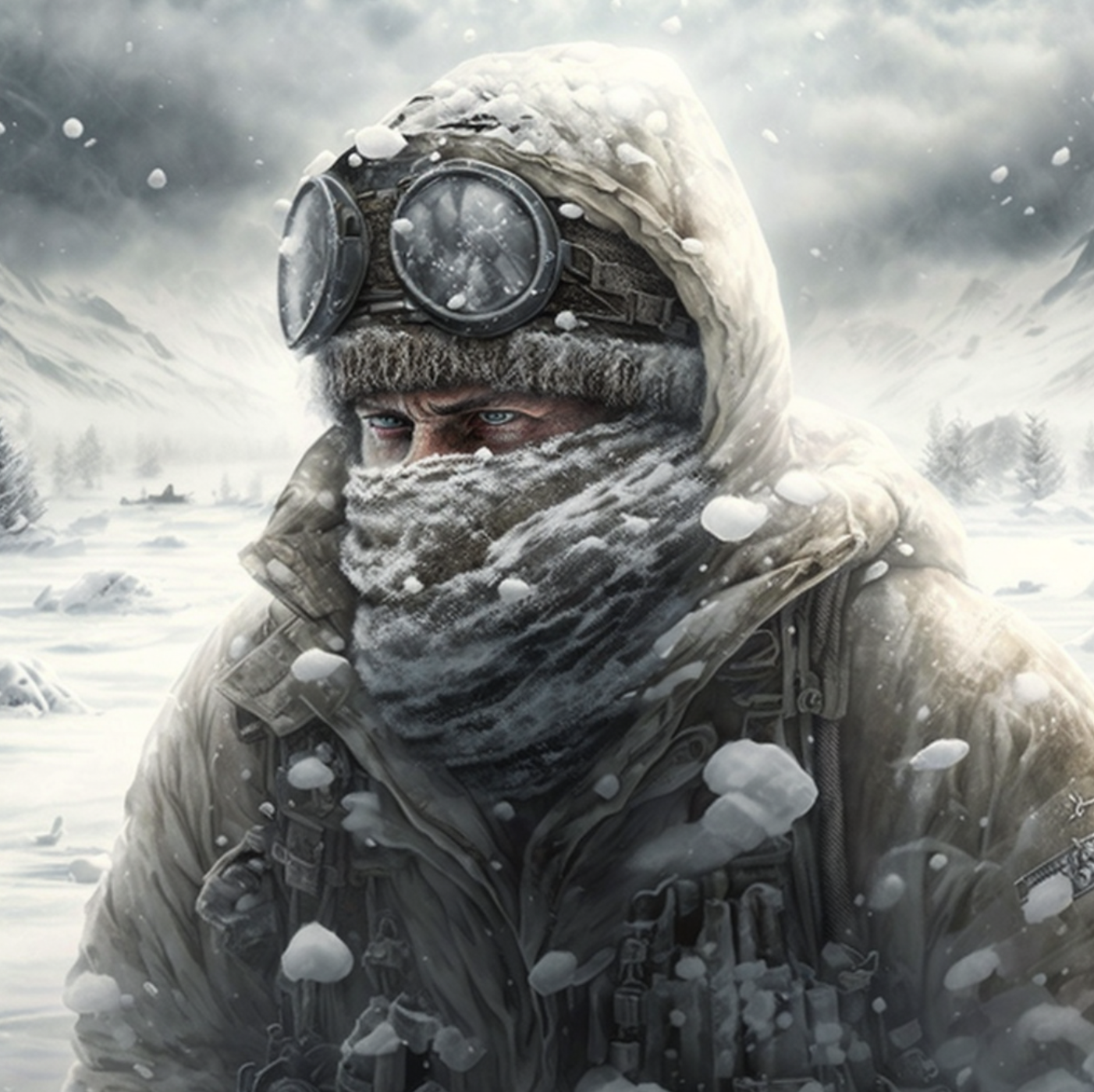
Natural disasters can be frightening and challenging to foresee. Nonetheless, knowing what measures to take and preparing effectively can increase your chance of surviving such an event. Understanding the types of disasters likely to occur near you, getting ready for these possibilities, and learning the correct responses can not only provide peace of mind but also guarantee your well-being.
13 Natural Survival Events: How to Prepare for Them
Sometimes it can feel impossible to prepare for everything in a world filled with chaos and unrest. You can always count on one thing for survival: Mother Nature.
Some natural occurrences, like man-made ones, can be predicted using news and studies. However, they can also happen quickly without notice. Natural survival events are so predictable that you can predict when they will occur and be prepared based on where you live.

Sometimes you will be notified in advance of days or even weeks so that you have enough time to prepare for an emergency or to gather supplies. You want to be prepared in case of an unexpected event so you don’t panic.
You don’t have to purchase the latest gadgets or gear. It is also about learning the skills and knowledge you need to navigate dangerous natural events.
#1 – Cold Weather Survival Events
Extremely cold weather can cause minor inconveniences and even death. You need to be prepared, regardless of whether you live in an area that experiences extreme cold or a place that is rarely subject to this kind of weather.
This type of weather can cause discomfort, incapacitation, or even death. If temperatures drop, you may experience hypothermia and frostbite.
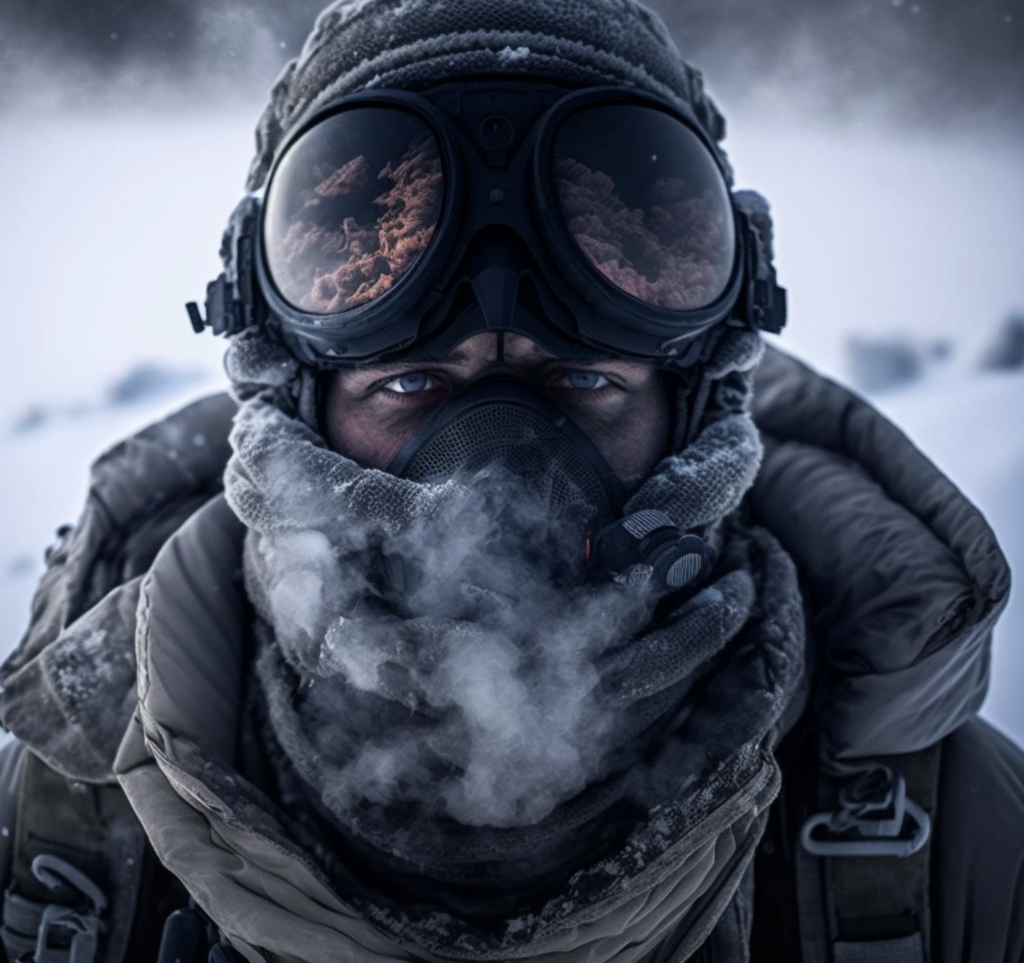
Hypothermia can cause you to become confused and sleepy, making it challenging to navigate the weather conditions. The risk of heart attack can be increased by extreme cold.
Even if you are not at home, the grid could go down, and you could be at high risk. People living in Northern states must deal with snow and blizzards every year. However, even residents of warm states such as Texas can be affected by unexpected winter weather.
People rush to the stores when winter is near, only to find that the staples they need to weather a storm are out of stock.
It is important to keep food in stock that you can heat up quickly, such as soups. You also need non-perishable foods that you can eat. You should have supplies for the Sterno Stove that can be used indoors to heat food and warm beverages that will give you warmth and comfort from the inside.
You will also need to find a way to protect your doors and windows. Use thermal products, or bubble wrap to insulate them. This can help to keep the cold out.
A tent you can set up indoors can keep your body warm, while a sleeping bag is designed for temperatures below freezing can be purchased.
You can also invest in hand warmers that can be activated and used for up to ten hours. You can keep them in your pocket or with insoles.
It is essential to have a generator in order to keep you warm. A space heater can be powered up or a larger generator might be used to heat your home.

If you have a fireplace make sure you have enough wood to keep you warm in case of an outage. You might also want to ensure that your car is fueled up during winter storms.
You can still drive your car, even if it isn’t allowed to be. Avoid slippery roads that have ice or black ice if you must drive somewhere.
In case of an emergency, you will need to keep a bag with you in your car. You can save your life by having food, water, a backpack, and a means to communicate.
#2 – How to Survive Heat Waves
While many people only think about winter when considering a survival event or a heat wave, the heat can cause illness and even death. A heat wave can cause you to experience anything, from mild discomfort to more serious conditions.
You might feel a little dehydrated due to the lack of fluids from heat. This may make you thirsty but it can also cause you to lose energy and dizziness.

Heat stroke is a more serious condition that can be caused by heat. You might feel nauseated, dizzy, or worse if your body temperature rises to 104 degrees.
You may get severe sunburns if you’re out in the elements. You should immediately see a doctor if your skin becomes blistered, you feel dizzy, confused, or even cold.
You want to make sure your home is as cool as possible during heat waves. Do not open or close the doors more than you need to allow cooler air to escape.
To keep the sun out of your windows and cool the air inside, you can use reflective insulation material. To provide extra comfort, dress in loose, lightweight clothes.
Avoid activities that are too hot during the day. These should be saved for the cooler evenings or early morning hours, when the heat of the sun is less bothersome. A handheld fan with a battery or rechargeable motor that can be used is a good idea.
Solar chargers can be purchased to keep your device in good working order. You can also get small portable air conditioners, which you may be able run with a generator if your budget allows.
To survive extreme heat, one of the most important things to do is to keep hydrated. Drink plenty of water and give water to your pets.
#3 – Making It Through a Hurricane Safely
As we’ve seen, hurricanes can cause massive damage to cities and towns. The dangers of hurricanes can range from a Category 1 hurricane with winds up to 95 mph to a Category 5 hurricane with winds up to 157 mph or more. They can cause roof damage, total home collapse, and possibly even power outages for months.
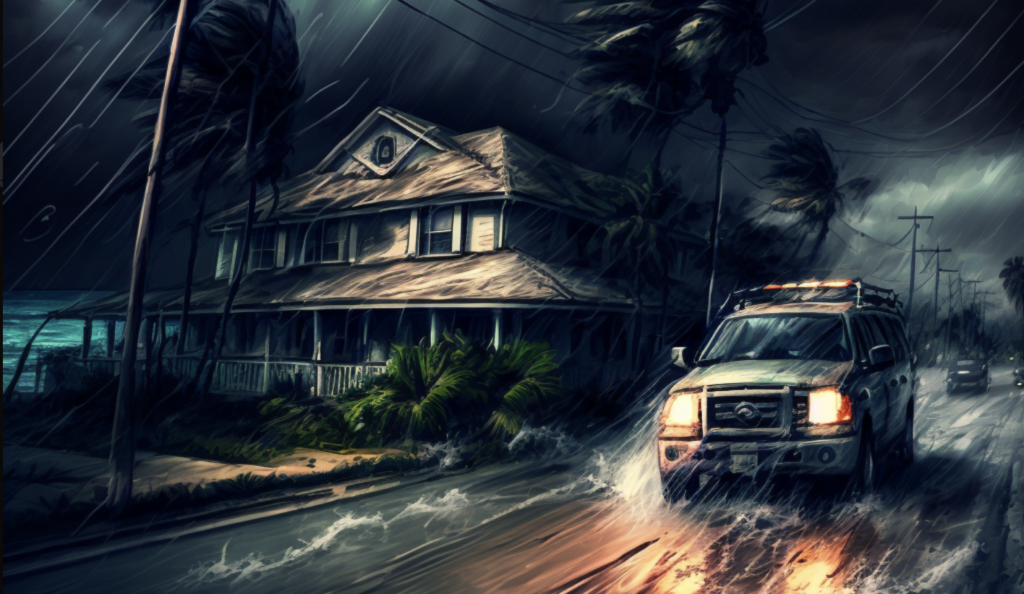
It can be difficult to stay in a place when a hurricane strikes. Fortunately, you are given ample notice before it makes landfall. You should be prepared for anything.
You might also experience wind damage from a hurricane.
You should avoid windows during a hurricane. Glass and other debris could fly around the windows. Do not let the calm weather fool you into thinking your home is safe.
Evacuation is always a good idea to save your life. You will need to save enough money to put your family and pets up in a hotel. You can make a list and reserve a hotel that is pet-friendly as soon as you know you will need to evacuate.
You want to protect your home from storm surges if you’re staying put. Water-activated flood barriers can be purchased to redirect water away from your doors.
You will need to keep your water safe and have ways to filter it if necessary. Also, you will want to keep some non-perishable food safe to eat during and following a hurricane.
Cash is essential for evacuation planning. However, if stores close and you decide to stay put, you may not be able to access electricity. In this case, cash will be your only way to buy what you need.
You should always have a flashlight. Inflatable waterproof lights can be purchased that can be charged using solar energy. These lights can be used to signal for assistance.
It is important to have an NOAA radio, preferably waterproof.
In case of an emergency, you might want to have a first aid kit on hand in case the rescue service is unable to reach you.
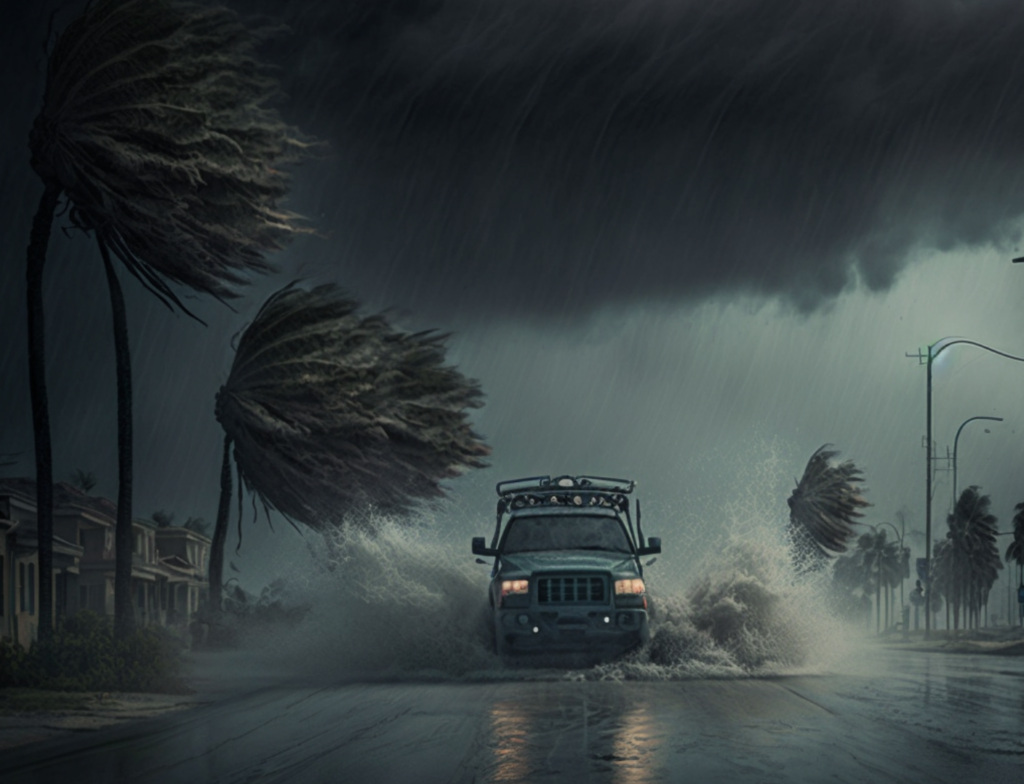
#4 – How to Prepare for and Survive a Flood or Tsunami
You need to be able to survive natural disasters, regardless of whether you live in flood-prone areas or if there is unusually high water levels.
Floods can occur from a buildup of water in one place over the course of minutes to hours. Or, it could be caused by a tsunami. A tsunami is a powerful wave that strikes the ground in a destructive force following an earthquake or other land shift underwater.
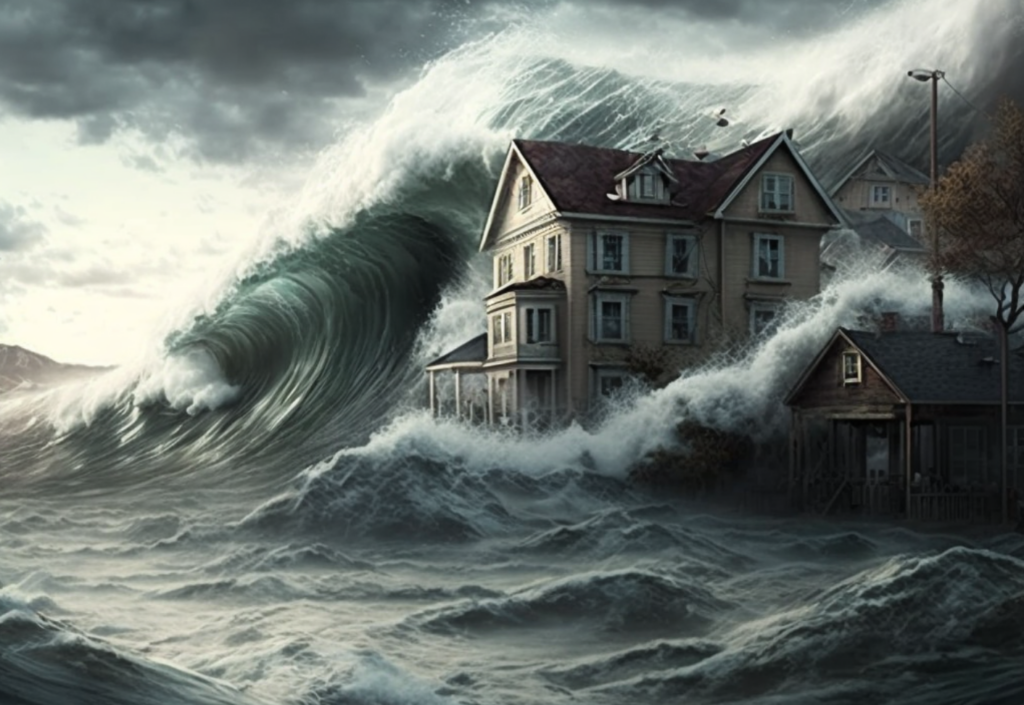
These water events can cause minor disruptions and damage, but they can also cause major destruction of homes and lives. It is important to evacuate to higher ground if possible. However, you should never cross water-spreading areas.
You might not have clean water if you live in an area with this kind of water crisis. You should have water purification equipment and extra water to help you get through.
If your car is caught in a flash flooding situation and your car starts moving in the water, you should try to escape through a window. Once you have climbed to the top of your car’s roof, you will be able to grab something like a tree or another sturdy object.
You need to be aware of signs that a tsunami is approaching if you are in an area where it can cause damage. This is not the best time to go to the beach to look for seashells.
You should aim for higher ground and further inland. Do not wait to see the wave strike. It will be swiftly moving, and you will not be able to escape it if it isn’t too soon. Hold onto debris to stay afloat if you get caught in the water.
#5 – The Severe Damages that a Drought can Cause if You Aren’t Prepared
Although many people underestimate the potential damage that drought can cause to a specific area, those who have experienced one know the risks. When you have no rain for prolonged periods.
Your area could be without water. This can lead to the destruction of local crops, as well as respiratory problems and allergic reactions.
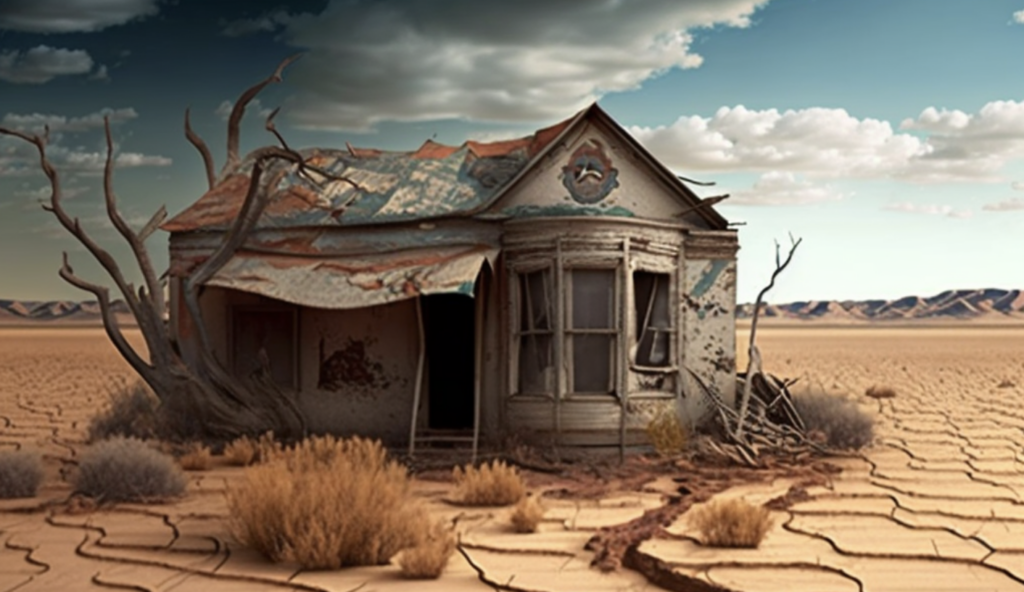
It might be difficult for you to grow your vegetables or raise animals for survival during drought. It can also cause foundation damage in your home.
We have not experienced droughts lasting decades since the dust bowl of the 1920s-1940s. However, droughts can cause more damage in certain areas.
California is the most affected state. However, Arizona and Texas also experience droughts from time to time. A prolonged drought could cause severe health problems, such as malnutrition or disease.
Reduce your water usage wherever you can so that water is not wasted. You can do this by ensuring that your plumbing isn’t leaking, and investing in water-saving toilets and appliances.
Rainwater collection gear is essential. Make sure to stock up on it whenever you can so you always have water available. Although storing enough water for several months or years is difficult, you can do your best to keep some on hand. You can also purchase water purification tabs in case you need to use stagnant water sources.
#6 – The Most Important Tornado Survival Preparations That You Need
Although you cannot predict the exact location of a tornado or how severe it will be, you can get some warnings about possible severe weather conditions that could lead to tornadoes.
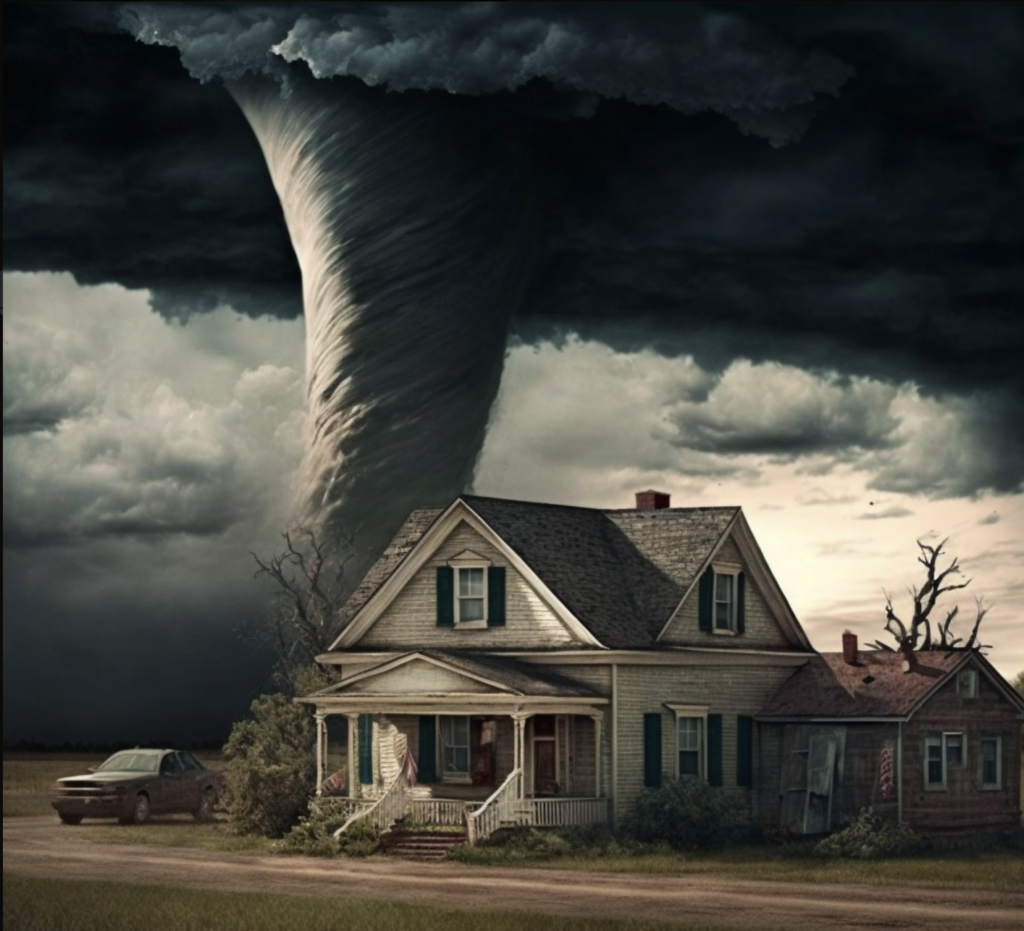
You may have enough time to move to a different location. Most people will stay put and prepare for this eventuality. You might consider moving to a more secure construction if you live in an area that is vulnerable to being completely destroyed by a tornado.
You are at risk of being struck by high winds and debris that could lift you up, and then thrown away by another place.
If you have the money, a tornado shelter should be installed in your home. You can learn when the shelter is needed by paying attention to weather and news reports. You can also look out for tornado sirens from your local government.
You may be able to rent a basement or a room in your home without having to purchase a tornado shelter. You should not be on the second floor of your house.
It is better to get out of your car and lie down in a ditch than for the tornado to pick it up and toss it somewhere else. To prevent any glass from breaking, keep your head low and cover your face if you are unable to leave your car.
Most tornadoes are gone in minutes. Sometimes, however, multiple tornadoes can hit the same area. These tornadoes often strike at night, so make sure to have something you can see so you don’t get any debris.
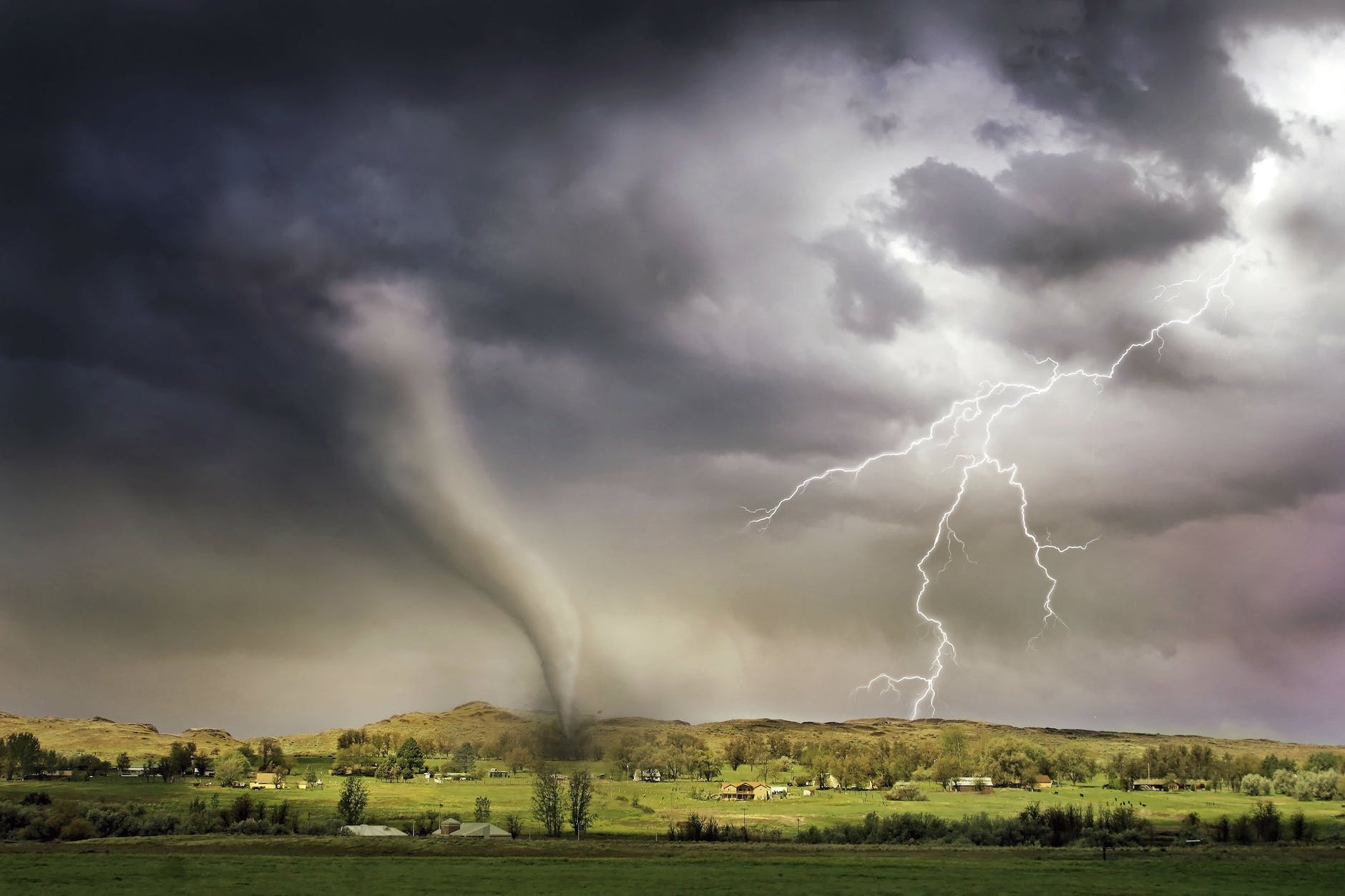
You may need a bug out bag to help you make it through the night, depending on the weather. You will need to have a variety of sleeping bags or blankets.
#7 – How to Survive a Wildfire Event
Wildfires are often thought to be man-made events, and they usually are. But not always. Some are caused by lightening strike. The natural danger of a wildfire is the surrounding conditions of the land.
When an area is in a drought situation, and the land surrounding it is dry and overgrown, a lightening strike (or something else) can use those conditions to fuel an out of control fire that poses a huge threat to you and your property.
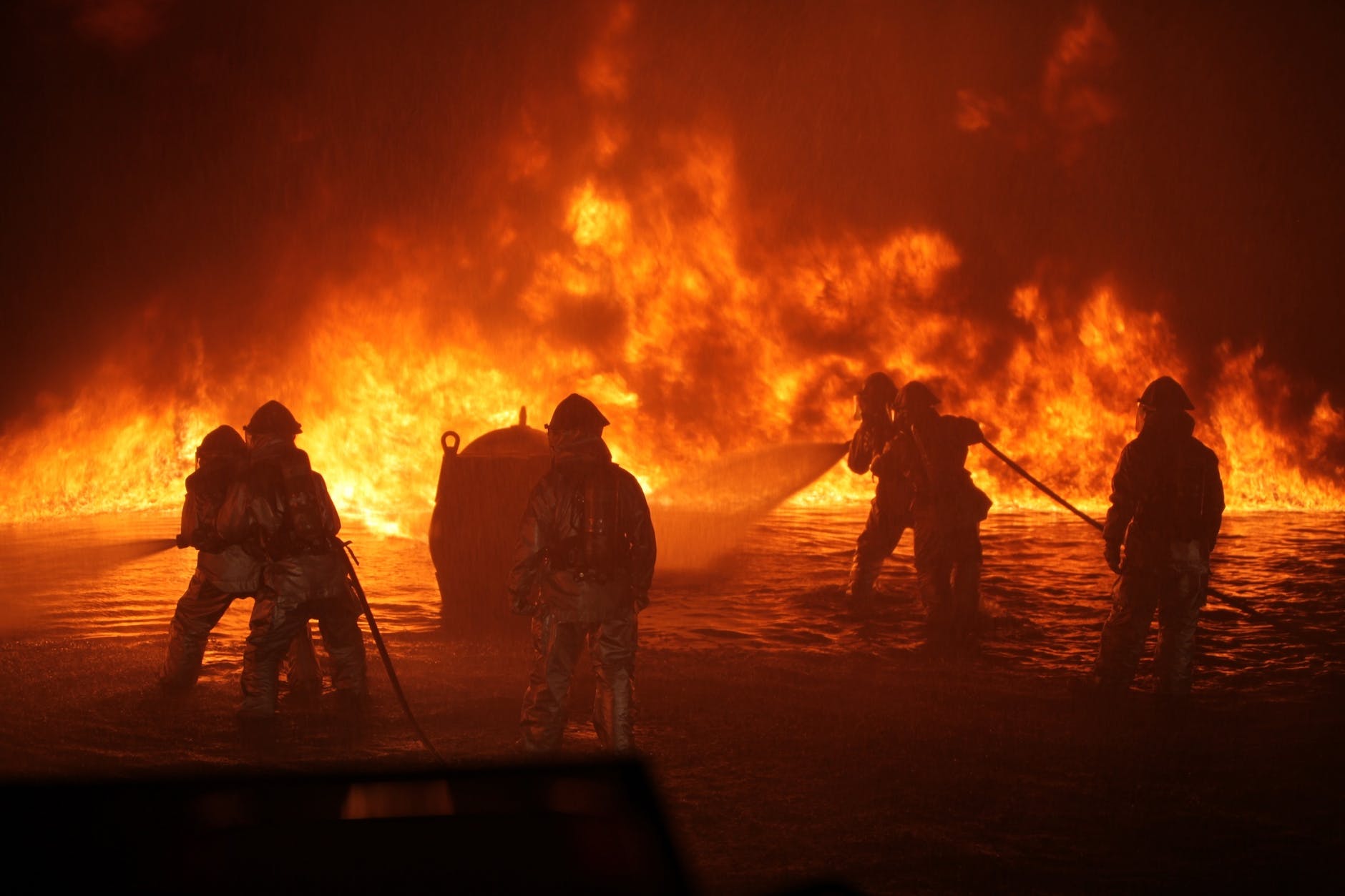
People are often warned to evacuate and instead stay and try to fight the fire on their own. This is a bad idea, because even if you have a car thinking you’ll escape if it gets too bad, many have gotten trapped trying to drive through wildfires and ended up deceased.
If you do get trapped at home with no way to escape, grab a fire extinguisher to have on hand and quickly fill a bathtub with water (and your sinks, too). Notify emergency services of your location and just like in a tornado, stay away from windows and doors.
Soak some clothes or towels and place them under the door too prevent smoke from flooding your room. You want to have flashlights on hand in case you’re stuck without power and need to see or signal for help.
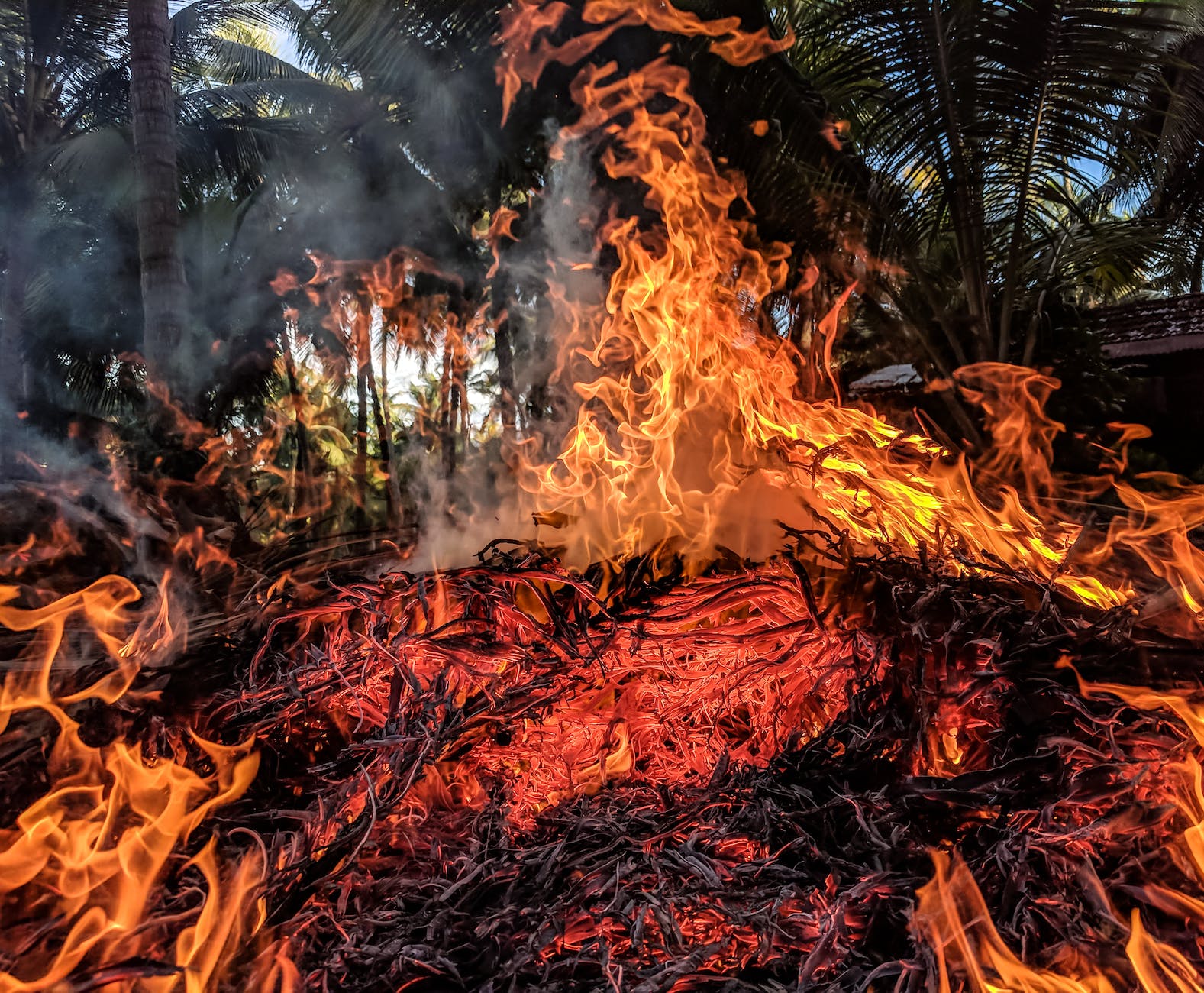
If you do have time to prepare and plan, you can use a hose or sprinkler to soak the outside of your home and yard. Be sure to shut off any gas and get any propane far from your home.
If you live in an area prone to wildfire threats, make sure you have masks that can help you breathe. You’ll also want to stock your first aid kit with some bandages and burn ointment and have access to (or knowledge of) more than one way to escape your property and get to safety.
Wildfires are uncontrolled, unmanaged fires that are fueled by vegetation. They can quickly spread over large areas.
The most important step in surviving a wildfire is to be prepared. It would be best if you had the necessary supplies on hand, such as emergency food and water rations, first-aid kits, flashlights, and communication devices.
It is also important to identify areas around your home that could pose a risk of fire. This might include dry brush, grass, or trees. You may need to clear these areas so that the fire cannot easily spread from one place to another.
If a wildfire is approaching your home or you are in an area where it is difficult to escape, you should stay as calm and quiet as possible. This will help you avoid breathing in too much smoke and making yourself more visible to the fire.
If you can safely evacuate, then you should do so as quickly and calmly as possible. You may want to try to protect your home if it is not too dangerous or it has been completely destroyed by a previous wildfire.
The most important thing during a wildfire event is to stay informed about any developments. You should be listening to local news and weather reports and following the updates from official sources such as fire departments.
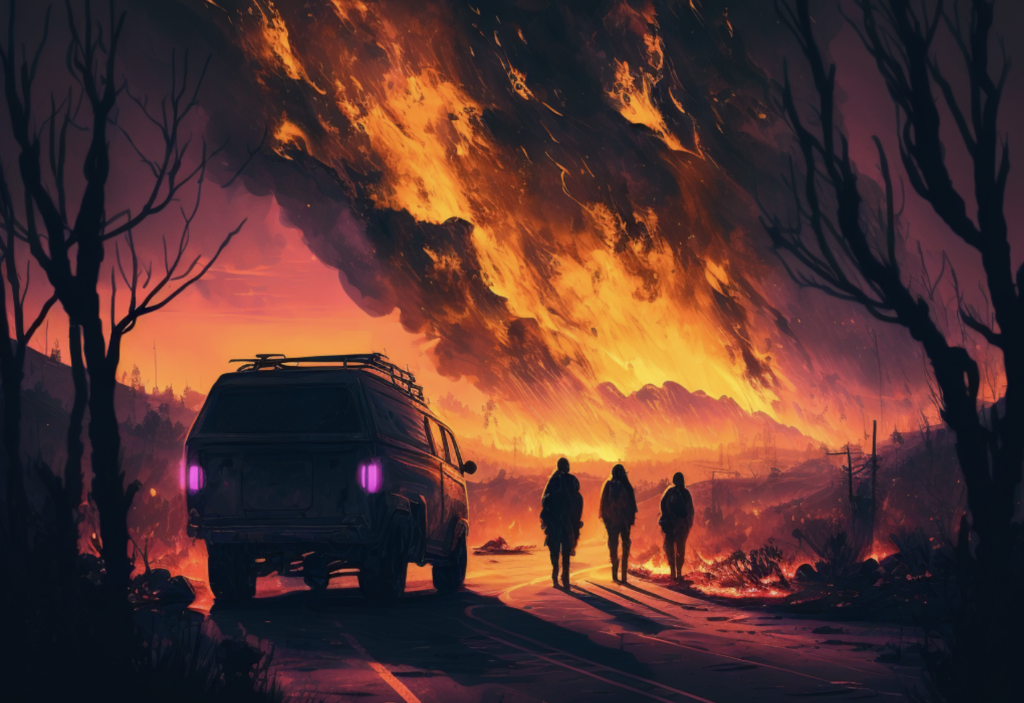
You may need to seek medical assistance if you are injured during a wildfire or if your physical health has been compromised in some other way. You may also want to work with a professional mental health counselor if you are suffering from emotional distress.
In the event of a large-scale wildfire, it is important to have a plan in place for your community or family. This might include coordinating an evacuation route and gathering points, setting up emergency shelters, and having pre-arranged communication channels.
As with any natural disaster, you should always be respectful of the power and destruction that wildfires can cause. Acknowledge your feelings surrounding the event, and try to find support from family members or friends during this difficult time. You may also consider seeking professional counseling if you are struggling emotionally due to the wildfire. Proper preparation and planning can significantly reduce your risk of being impacted by a wildfire. By working with local authorities, identifying fire risks in your area, and taking appropriate safety precautions, you can help ensure a safe outcome for you and those around you.
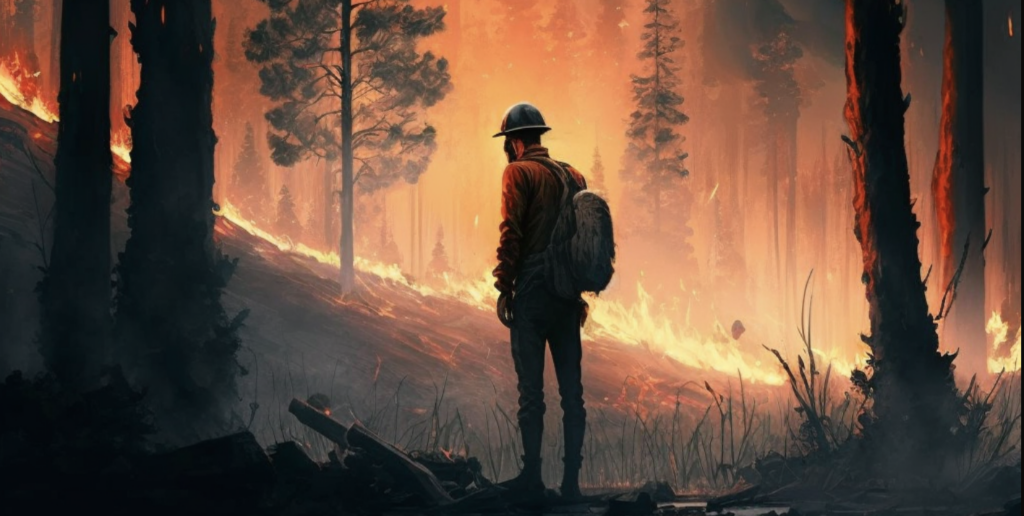
#8 – Tips to Survive an Asteroid/Meteor Strike
Many movies have been made about large meteors and asteroids striking the earth and threatening civilization. Although it is possible for something like this to happen at any time, it is more likely that smaller meteors or asteroids will have a less devastating impact.
In such a situation, shelter is your best friend. It is important to have strong enough walls to withstand the impact. You will need food, water, and other supplies to sustain you for a long time in an environment that makes it difficult to grow food.

Remember that the majority of the earth’s surface is covered by water. This is where an asteroid, meteor, or other spacecraft would most likely hit. This also means that an impact would likely cause a tsunami.
To avoid this, you would prefer to live further inland. It is best to keep up-to-date with any possible collision predictions made by scientists and experts.
If you have the money, it is worth investing in a bunker or other structure that can withstand such a large amount of damage. This type of situation can be overcome by having a lot of food and water along with a fortified structure.

#9 – Preparing for an Earthquake and How to Prepare
Geologists warn of the possibility of a devastating earthquake in California. Each year, earthquakes strike the region.
This happens when the tectonic plates on the earth shift. It can cause buildings to fall, or make them unsafe. You will need a bug-out bag, just like for other natural disasters. It should contain your food and water, a flashlight, and other essential supplies if you are on your own.
If your building is unsafe or there are likely more earthquakes in the future, you may need to evacuate the area. Protect your head against falling objects if you’re in an area where an earthquake strikes.
Although many people believe that an earthquake should cause you to evacuate the building, experts recommend that you stay in the room you are currently in. Avoid glass that may break or heavy objects that could tip.
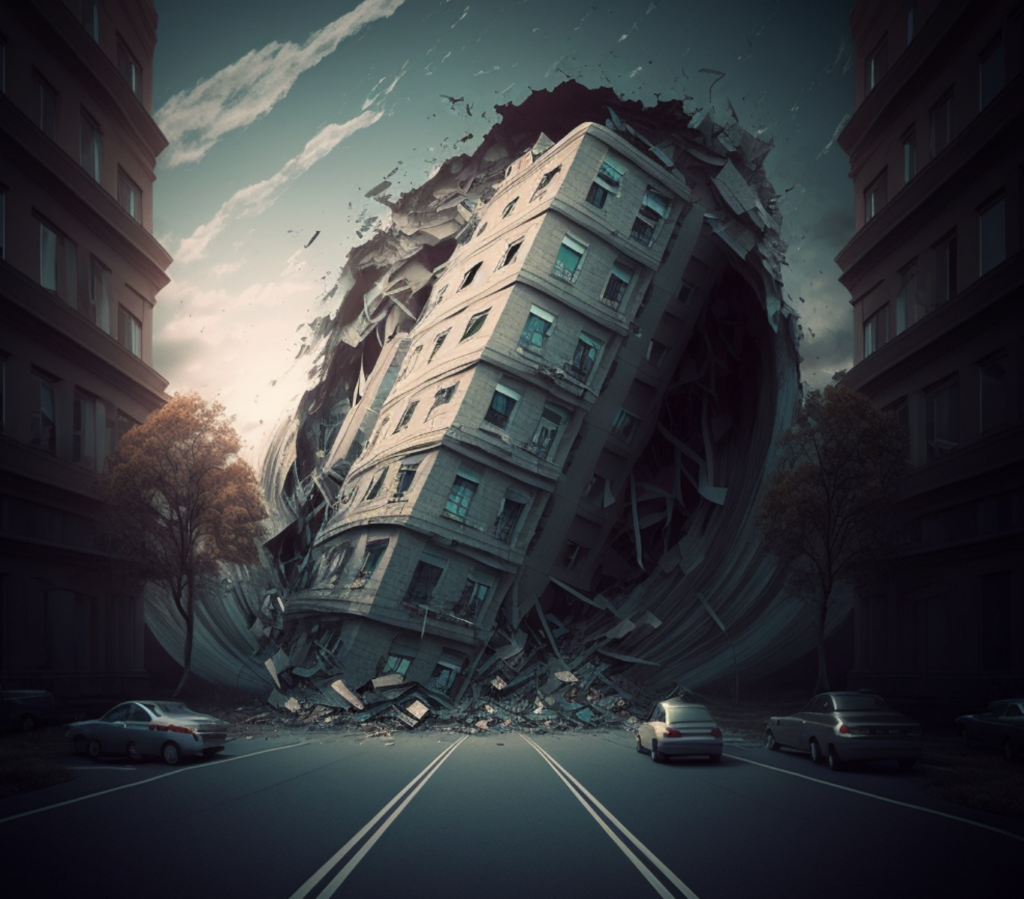
You should always park your car in a parking place if you are traveling in a car. No matter where you are located, power lines can fall and prove fatal.
To receive important safety information or directions about where to go, you must tune into emergency radio stations.
#10 – What a Volcano Expansion Could Do to Cause Destruction
Although volcanoes can be found in many regions, not all are as active or explosive. Experts will usually know when a volcano will erupt and give you enough time to evacuate.
This is not always the case. You should be cautious about breathing in an area with a volcanic eruption. The ash that falls from high above can seriously affect your health.
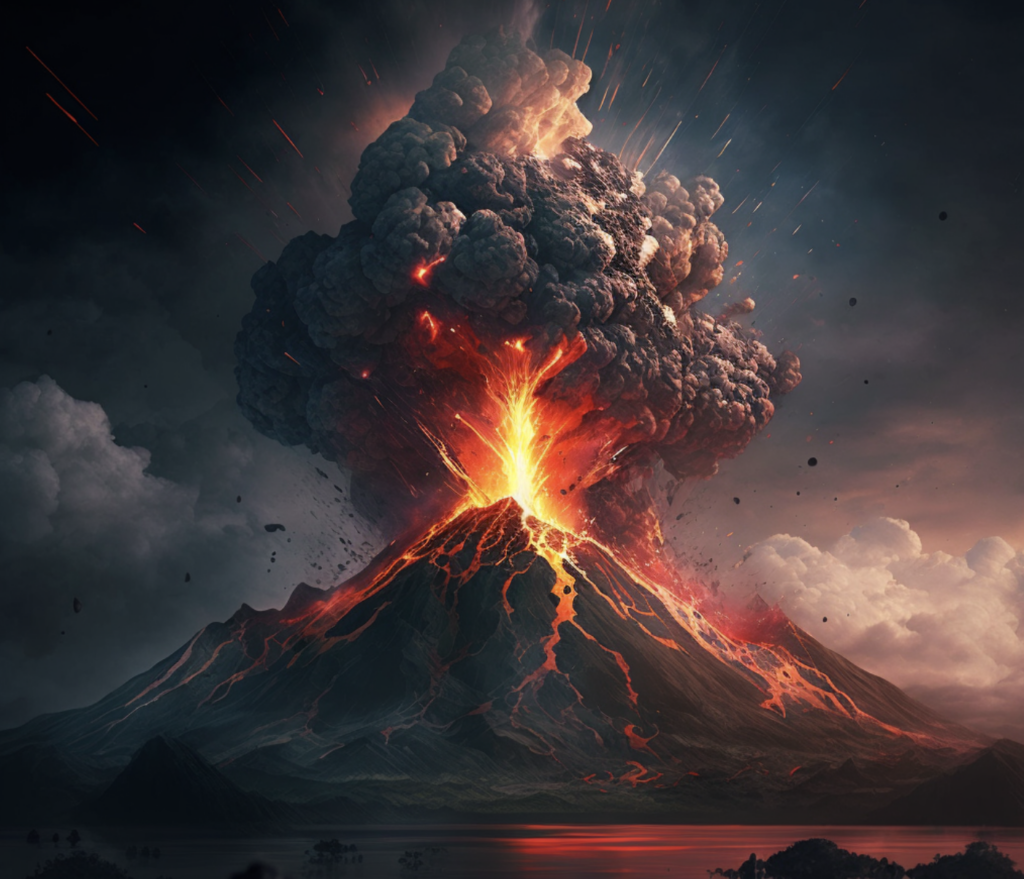
If your home is near a volcano, it can be hazardous if it is not designed to withstand the heavy ash and lava flows that could reach your home.
Ensure you obey any evacuation orders issued by government officials to avoid getting stuck in dangerous situations. You should take shelter if you find yourself in the path of a volcanic eruption.
You may need extra cleaning supplies to clear the windows of your car.
#11 – 3 Earth Shifts that You Need to Be Ready For
We have already discussed tsunamis which earthquakes or shifts under the water can cause. There are also land-based shifts on the Earth’s surface which can lead to dangerous survival situations.
These include a land slide, a flood, and an avalanche. A landslide is a land slide that causes the entire top of the Earth to fall on top of anything below.
A mudslide works in a similar way, except that instead of dry rocks or debris, there will be a sliding block made of clay or mud, which is moving downhill almost as fast as hot lava.
An avalanche is similar, except that instead of rocks and mud, a huge block of snow begins to break up and tumble downhill, covering all it touches.
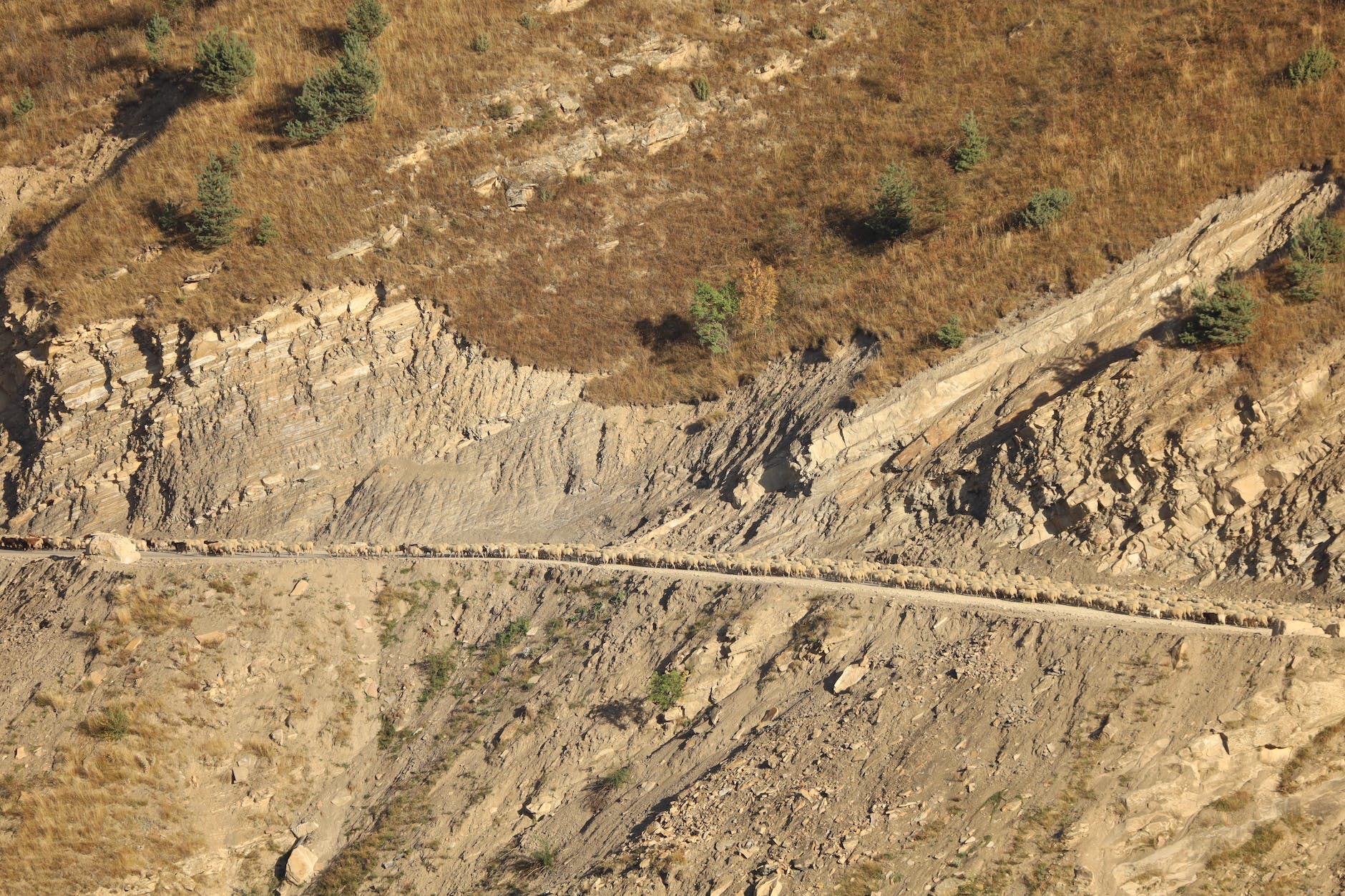
If you live in an area that is prone to landslides, be aware of the common warning signs. You may notice shifting foundations or water problems on your property you didn’t know existed.
Sometimes you can hear the beginnings a landslide. It may begin slowly and then become more severe. You should have notification enabled if you live in an area that is susceptible to landslides and mudslides.
A landslide is different from tornadoes or tsunamis. You will need to climb higher ground to reach the second floor of your home. Protect your head from debris and rocks if you’re caught in a landslide.
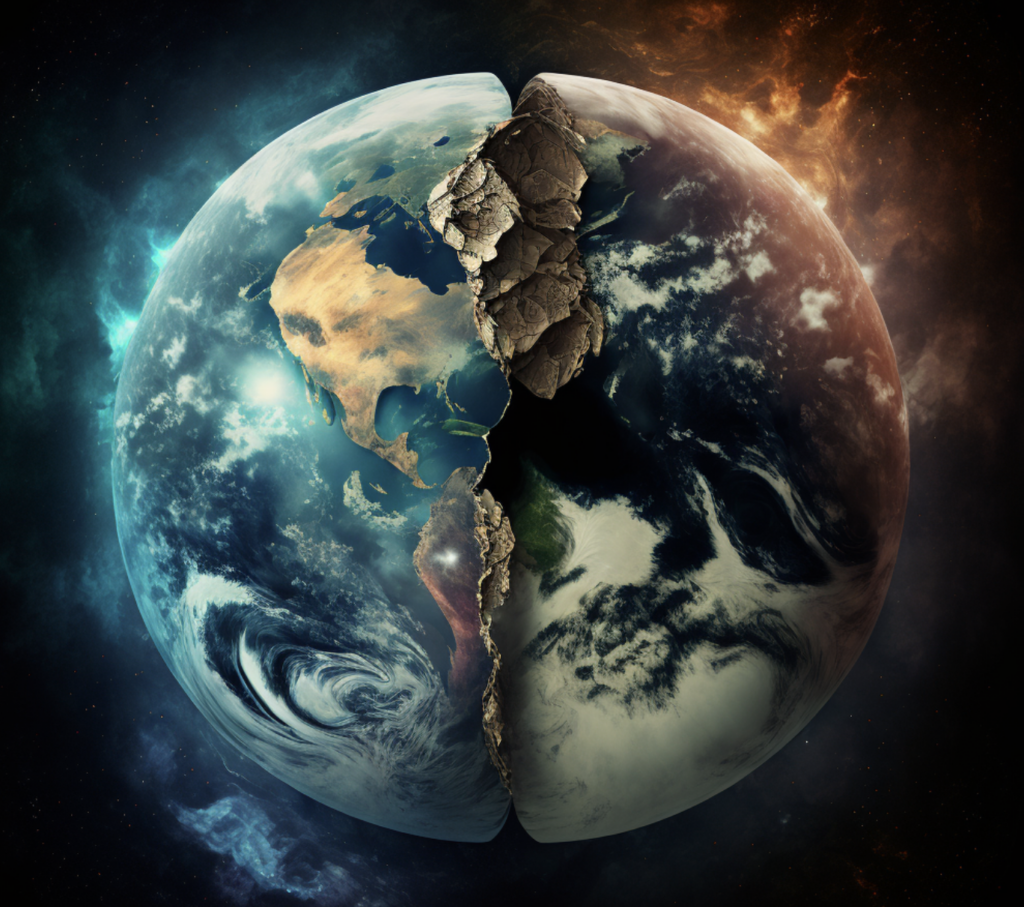
Outdoor snow sports are popular for those who are trapped in an avalanche. Try to get to the other side of the avalanche to avoid being trapped in the deepest snow.
Do not let your arm go up if an avalanche buries you. Being buried in an Avalanche is the worst thing.
You want to make sure you have enough space between your chest and face to allow you to breathe freely without feeling confined or crushed. You should always have a beacon in case you get caught in an avalanche.
#12 – How to Survive Sand and Hail Storms, and Minimize Damage
Although it might not seem so dangerous, dust storms, or sandstorms, can create large amounts of dust particles that can harm your health. Driving can be dangerous if you get caught in a storm.
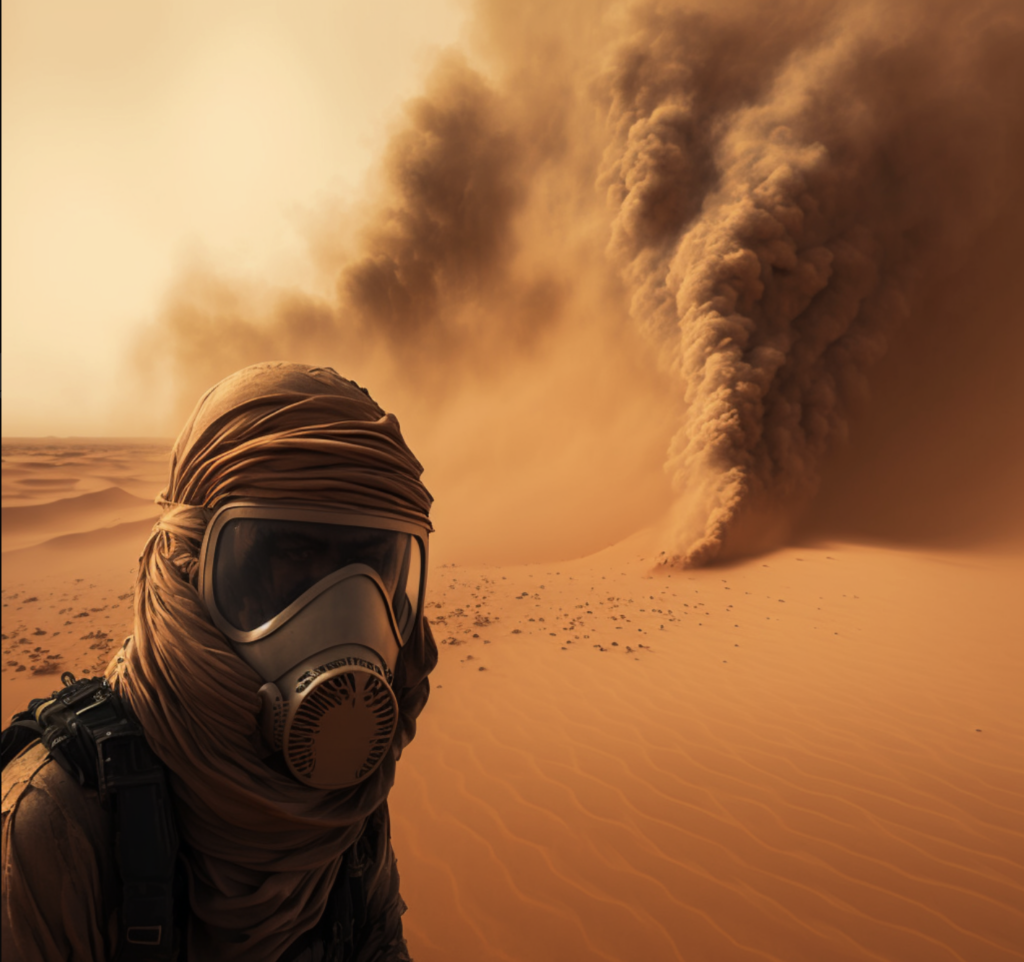
A sandstorm can make it very scary to be outside. People aren’t used to having a wall of sand falling on them. Make sure to have a mask if you’re in an area susceptible to sandstorms. This will allow you to breathe easier and protect your face.
You can seek shelter indoors if you are able, or stand behind something to prevent being hit by the flying sand. You should make sure that all windows and doors are closed when you’re at home.
Hailstorms can be a sudden natural disasters. These can be small pebbles or softball-sized ice balls, which can cause damage to your property and even severe injury.
To survive a hailstorm, the best thing to do is seek shelter as soon as possible. You should avoid windows that might break or cause the flying glass, as hail can be very large.
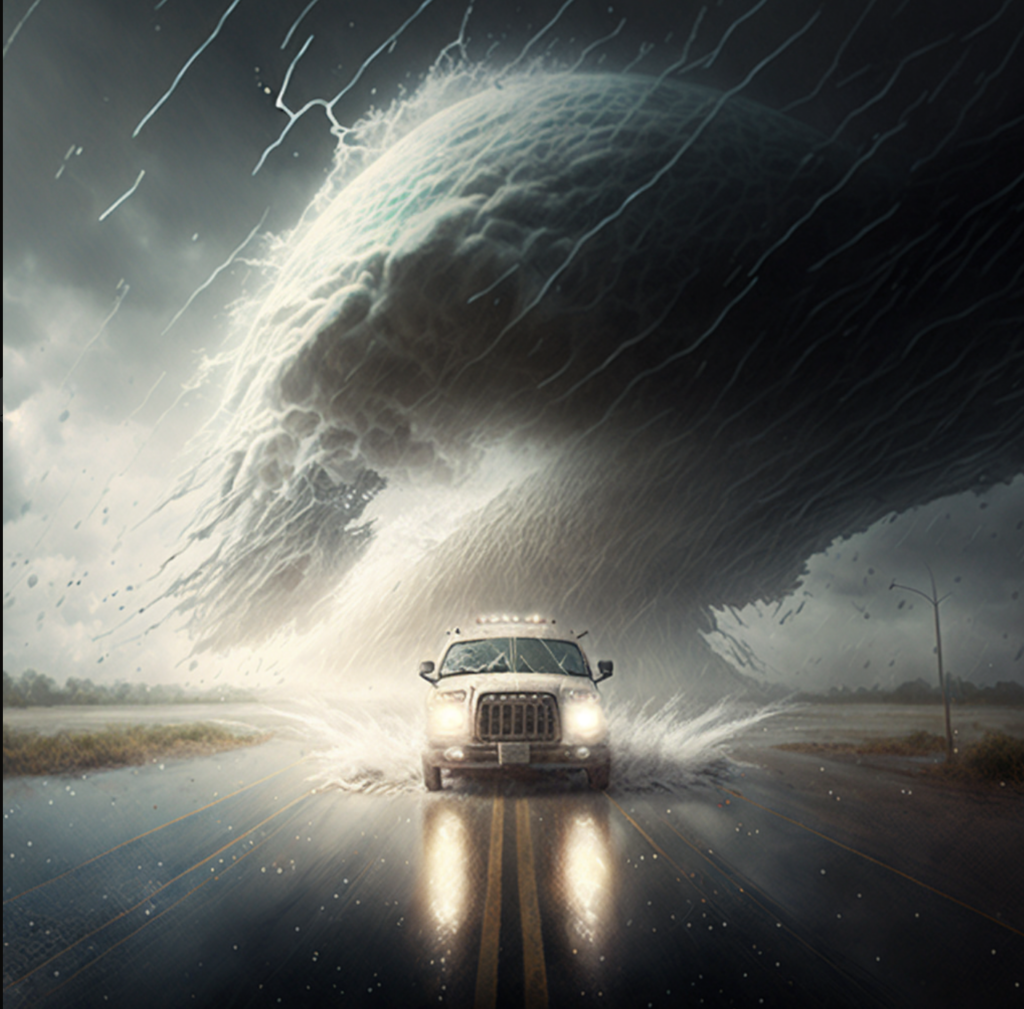
Hail damage is the main problem with hail. Hail can cause damage to your vehicle and roof. You can buy hail proof covers for your car, but you should also ensure you have enough insurance to cover damage to your roof.
#13 – You Can Make Survival Preparations for a Solar Flare Event
Solar energy is often a good option when it comes to survival. Solar gadgets are a great way to keep a reliable source of energy available for charging your devices.
The sun can also pose a threat to your survival. A solar flare is a powerful burst radiation from the sun’s surface. It can last anywhere from minutes to hours, and even longer.
Our atmosphere is protected from most CMEs from the sun, which is good. However, technology is not as robust as you might think when it comes to withstanding the effects a solar flare can cause.
Although solar storms can be predicted and forecasted in advance, they can still cause serious damage to electronics and the grid. You should invest in a complete home surge protector.

Preparing for a solar flare survival situation by being prepared to live without electricity for a prolonged period of time is the best way. You can prepare for a solar flare situation by purchasing everything you will need to survive for a prolonged period of time without electricity.
Make sure you have enough water and non-perishable food. Prepare to protect your family and home from any intruders who may be trying to steal supplies.
Conclusion
Surviving natural disasters, such as tornadoes, tsunamis, and avalanches. It is important to take the necessary measures to protect yourself and your family during these dangerous events. Outdoor snow sports should always be avoided when in an avalanche as you should try to get to the other side instead of swimming or struggling.

You should also always have a beacon with you just in case and make sure to have enough space between your chest and face to allow for breathing freely without feeling cramped. Dust storms can be scary and dangerous, but if you are prepared, you can survive them. Make sure that you have a mask on hand when in an area where dust storms are common and make sure to protect yourself from any flying sand or debris.
Finally, solar flares can be devastating and cause serious damage to your electronic devices as well as the grid. It is important to take the necessary measures to survive a severe solar storm, such as buying all the proper equipment for electricity-free living. Do you have any other tips on how to survive natural disasters? Leave a comment below and let us know.
No matter where you live, work, or travel, it is important to be prepared for natural disasters. You should prepare by stocking up on essentials, learning how to navigate it if you are caught in one, and keeping an eye out for news and predictions about possible events to help you avoid them or prepare for them.
Hi, I’m Liz! I love spending time outdoors and enjoying nature. Whether it’s camping, hiking, or just exploring new areas, I love getting out there and experiencing everything that the world has to offer.
I’m also an outdoor enthusiast who loves helping others enjoy the great outdoors too. I’ve been a camp counselor and outdoor education instructor for kids of all ages, and I really enjoy teaching people about nature and getting them excited about being in the wilderness.
Survival Skills
The Beginner’s Guide to Water Collection and Storage: Techniques for Preparing and Purifying Water in Emergency Situations
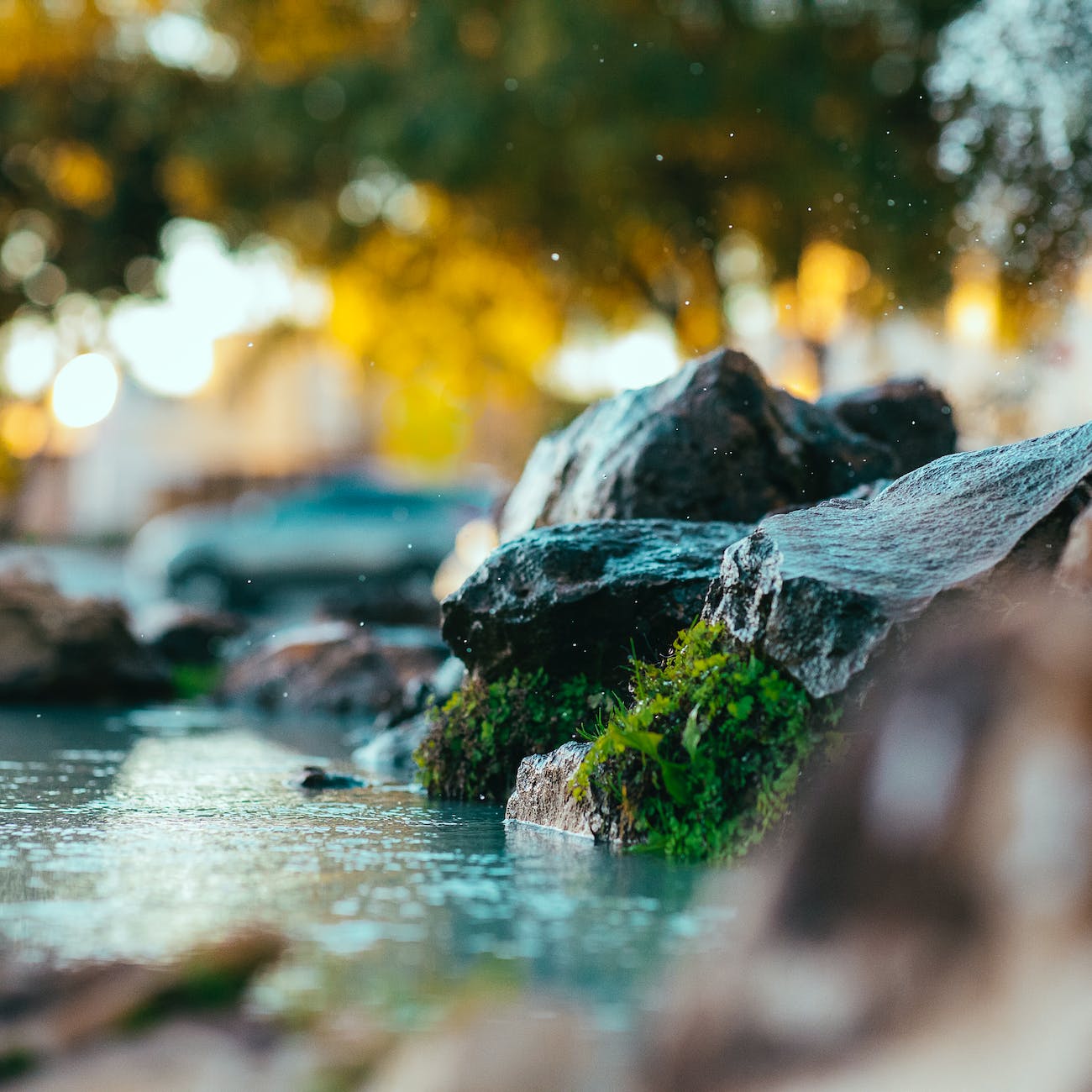
Prepping for Clean Water: What You Need to Know
Getting ready involves preparing for unexpected situations and potential emergencies. A key part of preparation is knowing how to obtain clean drinking water, as it is impossible to survive without it. In this blog post, we’ll explore different techniques for collecting and storing clean water to make sure you’re prepared for whatever may come.
Collecting Water from Natural Sources
When it comes to collecting clean water, there are several options available. The most common option is to collect rainwater with a tarp or other container. You can also collect condensation from your air conditioner unit or dew from plants at night.
If you live near a natural body of water like a lake or stream, you can use a filtration system to ensure the water is safe before drinking. Additionally, you can melt snow into drinkable water if you have access to snow.
The main advantage of collecting water from natural sources is that it’s free and readily available. However, safety should always be your top priority when collecting water in this manner. Make sure you use appropriate filtration systems and purification methods if necessary in order to ensure that the collected water is safe for consumption.
Additionally, use sterile tools and techniques to take precautions against contamination when transferring the collected water into storage containers.
Storing Potable Water for Emergencies
Once you have collected an adequate supply of potable water, it’s important that you store it properly in order to prevent spoilage and contamination over time. Select containers that are made specifically for storing potable water as they will have lids with tight seals that will help keep out contaminants while keeping your stored water fresh longer.
Additionally, establish a rotation schedule so that older stored containers are used first while newer ones are kept on reserve in case of emergencies. When choosing containers for storing potable water, make sure they are made out of food-grade material like stainless steel or BPA-free plastic in order to avoid contamination from certain chemicals such as lead or phthalates, which may leach into the stored liquid over time if not properly sealed off from contact with these substances.
Another factor to consider when storing potable water is temperature; higher temperatures can cause mold growth inside stored containers over time, so make sure your storage area stays cool and well-ventilated.
Setting Up and Using Rain Catches: Water Collection and Storage for Beginner Preppers
In a survival situation, having access to clean water is one of the most crucial things you’re going to need. As a beginner prepper, it can be not very safe – but with the right steps and preparations, water collection and storage is much easier than you might think.
Rain catches are an excellent way to get started sustainably collecting water. By installing rain catchers like barrels or tanks, you can reliably store many gallons of water that will stay fresh for years. With some easy-to-obtain materials, such as plastic sheeting or mesh netting, you can create your own makeshift rain catcher that fits your needs.
These catchers have the added benefit of keeping out any debris or insects that could contaminate the collected water.
Once your rain catch is set up and collecting, the next important step is storage. There are several ways to store collected rainwater safely and effectively. For example, traditional methods such as buckets or barrels will help keep large amounts of water in one place for long periods of time – perfect for rainy days when large quantities may need to be stored quickly.
Additionally, make sure to invest in some containers like jugs or bottles for quick access if needed.
Setting up and using rain catches is a great way for beginner preppers to start collecting and storing water in a sustainable manner! With some basic supplies, you’ll be well on your way to having reliable access to drinking water should an emergency situation arise!
Collecting Water from Natural Sources
In a survival situation, having access to clean water is one of the most crucial things you will need. As a beginner prepper, it cannot be very safe – but with the proper steps and preparations, water collection and storage is much easier than you might think.
Collecting water from natural sources such as springs, lakes, rivers or streams can provide an excellent source of clean drinking water for long-term use. Start by exploring your local area for potential water sources and check for any signs of contamination before collecting. Ensure that you also have appropriate filtration and purification equipment on hand – this will help to rid the collected water from any virus or bacteria that may be present.
Once you have your natural source identified and collected safely, it’s important to make sure the stored drinking water is safe for long-term use by using containers that are airtight and impermeable.
Consider investing in large tanks or barrels specifically designed for storing large amounts of water – these often come with special lids or caps that help protect against contamination over time. Additionally, make sure to collect enough drinking water each time – in an emergency where outdoor access is not always feasible you will want enough supply available!
Using Filters for Water Purification
In a survival situation, having access to clean water is one of the most crucial things you’re going to need. As a beginner prepper, it can be not very comforting – but with the right steps and preparations, water collection and storage is much easier than you might think.
Using filters for water purification is an essential part of any prepper’s plan when it comes to collecting and storing drinking water. Whether you are collecting from natural sources or utilizing rain catchers, having appropriate filtration systems in place will help ensure that your stored water is safe for long-term use.
One of the simplest methods for collecting water is cloth filters like mesh netting or cheesecloth. These can be used as makeshift ‘strainers’ by pouring collected water through them multiple times – this will help to remove large objects such as debris or insects that could contaminate the stored liquid over time. Investing in specialized filters like purifiers or chemical treatments may be necessary for smaller particles such as bacteria or viruses.
Using filtration systems is an important step for beginner preppers when collecting and storing drinking water in a sustainable manner! With some simple precautions taken beforehand, you’ll be able to have reliable access to clean drinking water should an emergency survival situation arise!
Chemical Based Water Purification
In a survival situation, having access to clean water is one of the most crucial things you’re going to need. As a beginner prepper, it can be not very safe – but with the right steps and preparations, water collection and storage is much easier than you might think.
Using chemical based treatments for water purification can provide an effective method for ensuring that your stored drinking water is safe from contaminants such as viruses or bacteria. Depending on the type of chemicals used, they can provide a quick solution when boiling or filtering the collected liquid isn’t possible – ideal in a time-sensitive emergency survival situation.
When looking into chemical-based treatments for water purification, make sure to check the ingredients list carefully and always follow the instructions provided. This will help ensure you’ve treated your drinking water safely and effectively! Additionally, remember to check the expiration date – expired treatments may not be able to guarantee reliable results fully.
Chemical based treatments are an excellent option for beginner preppers wanting to ensure their stored drinking water is safe for long-term use! With proper guidance and understanding of these treatments, you’ll be prepared for any emergency.
Purifying Water with Little or No Supplies
In a survival situation, having access to clean water is one of the most crucial things you’re going to need. As a beginner prepper, it can be intimidating – but with the right steps and preparations, water collection and storage is much easier than you might think.
If you find yourself in an emergency situation where supplies are scarce or unavailable, there are still ways in which you can purify your collected drinking water – even with little to no resources!
Boiling is an effective way of purifying water without any supplies. By bringing water to a rolling boil for at least 1 minute, the heat will kill off most harmful organisms that could potentially cause illness. Alternatively, if boiling isn’t possible due to lack of fuel or fire sources, solar disinfection (SODIS) can help make collected liquid safe for consumption by exposing it to direct sunlight in a plastic bottle over several hours.
By following these simple methods, purifying your collected drinking water with little or no supplies is easy and achievable even in an emergency survival situation! With correct preparation and knowledge beforehand however, having reliable access to clean drinking water should not be a problem.
Accessing Clean Drinking Water for Beginner Preppers: Identifying, Purifying, and Storing Water for Survival Situations
For beginner preppers, knowing how to access clean water in a survival situation is perhaps the most important initial task. Without an adequate supply of clean drinking water, any other prepping efforts you may have made become much less effective.
Depending on your surroundings, there are various ways to identify and safely store potable water. After checking for freely available sources, it may be necessary to purify found water using filtration systems or treating with chemical disinfectants.
It’s also important to keep hydrated as part of normal disaster preparedness routine and during emergency events. Keeping a stock of stored water should be done anyway for standard emergency scenarios but having clean water at the ready during a violent survival situation will be absolutely essential.
Simple Water Collection and Storage
Water collection and storage may initially sound intimidating, but it is really quite simple once you have the basics down. Start by finding a reliable source for your water where the supply will be consistent and free of contamination. Once you’ve identified the source, invest in some quality storage containers.
Be sure to use lids or covers on your containers to protect them from animals, keep debris out of the water, and reduce evaporation. If you are storing a large amount of liquid then it is wise to invest in collapsible containers that save space when they are not in use. Additionally, adding preservatives can help extend your stored water’s shelf life. Get started transforming your home into an oasis with adequate hydration today!
Sustainable Water Collection: Harnessing the Power of Nature for Clean Drinking Water
Collecting water from natural sources is a great way of accessing clean drinking water in an environmentally friendly, sustainable manner. It involves either harvesting rainwater, utilizing fog nets, or tapping into underground aquifers.
Collecting water this way reduces the need for additional treatment, meaning fewer new plants are needed to provide clean water to communities. Not only does this method protect the environment from further man-made constructions, it also helps reduce energy costs and preserves the health of watersheds by mitigating water abstraction as well as controlling wastewater discharge.
Collecting water from natural sources is an effective way to ensure that clean drinking water remains accessible for future generations.
Preparing for Emergency Water Supplies: The Importance of Safety Measures
Safety should be taken very seriously when it comes to preparing for emergency water supplies. Without sound knowledge and reliable safety measures, the wellbeing of those who come in contact with the stored water could be put at risk.
Appropriate safety measures such as investing in protective gear for those collecting large volumes of water, and regularly checking storage tanks for wear and tear must not be disregarded. Furthermore, open access to large amounts of stored water could pose potential health hazards with potential contamination that could jeopardize public health during crisis situations. To ensure that everyone remains safe in these difficult times, appropriate safety protocols must always be followed when handling large amounts of water.
Conclusion
Prepping for clean and accessible potable water is essential to any prepper’s plan as access to safe drinking sources cannot be taken lightly. In this blog post we discussed some key considerations when it comes to collecting and storing clean potable sources including gathering clean supplies from natural sources, selecting appropriate containers, establishing a rotation schedule, avoiding chemical contamination, and maintaining proper temperature storage conditions.
By being mindful of these factors we can ensure our supply lines remain intact no matter what unexpected circumstances may come our way.
With careful planning and preparation, preppers can rest assured knowing their families will have access to clean drinking supplies whenever needed. This allows us all peace of mind in uncertain times.
Water in Emergency Situations FAQ
What is the importance of emergency water supplies?
Having a reliable source of clean drinking water is crucial in emergency situations where access to potable water may be limited or cut off. Without an adequate supply of water, it can be difficult to meet basic needs such as drinking, cooking, and sanitation, which can lead to serious health problems.
How much water should I store for emergencies?
The American Red Cross recommends storing at least one gallon of water per person, per day for at least three days. This should include enough water for drinking, cooking, and sanitation.
How long can water be stored before it goes bad?
It is recommended to replace stored water every six months to ensure it is still safe to drink. If stored properly in a cool, dark place, water can last much longer.
What are some ways to purify water during emergencies?
Boiling water for at least one minute is an effective way to purify water. Chemical disinfectants such as chlorine or iodine can also be used. Filtering water through a fine mesh or using a water filter can also help remove contaminants.
What are some common sources of emergency water?
Rainwater, lakes, rivers, and underground aquifers are all potential sources of water in an emergency. It is important to note that any water collected from natural sources should be purified before consumption.
Are there any safety precautions I should take when handling emergency water supplies?
Yes, it is important to take appropriate safety measures when handling large amounts of water. This includes investing in protective gear for those collecting water, regularly checking storage tanks for wear and tear, and ensuring that stored water is properly sealed to prevent contamination.
Hi, I’m Liz! I love spending time outdoors and enjoying nature. Whether it’s camping, hiking, or just exploring new areas, I love getting out there and experiencing everything that the world has to offer.
I’m also an outdoor enthusiast who loves helping others enjoy the great outdoors too. I’ve been a camp counselor and outdoor education instructor for kids of all ages, and I really enjoy teaching people about nature and getting them excited about being in the wilderness.
Survival Skills
Preparing for Survival: How to Collect Clean Drinking Water
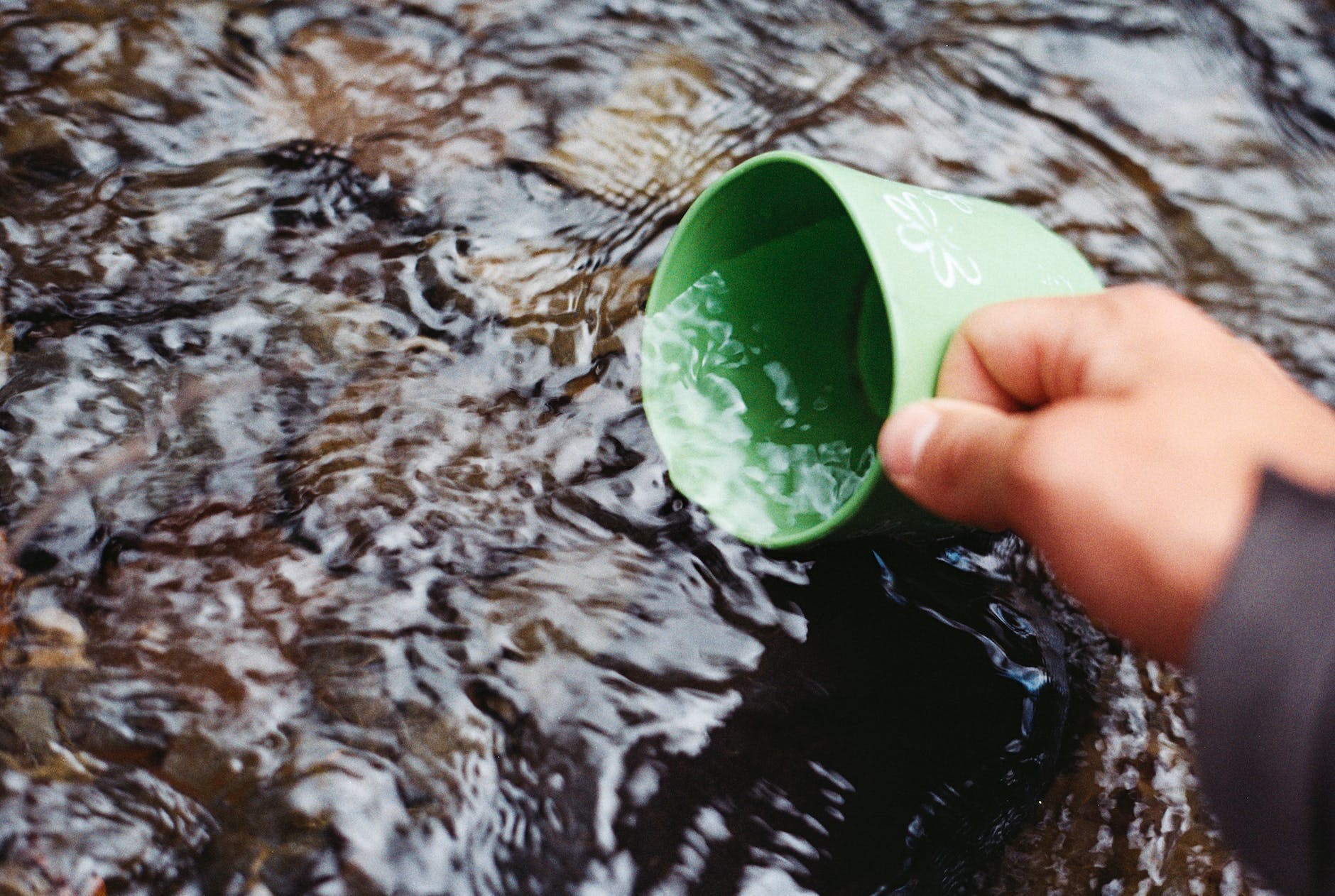
In a survival situation, it’s paramount to establish a reliable and clean source of drinking water. Often, new preppers may feel overwhelmed by the importance of this essential resource, as collecting and purifying water can be challenging without adequate preparation.
This blog post will cover how to collect clean drinking water in a survival situation, from rainwater collection to collecting from natural sources.
Rain Water Collection
Rainwater collection is an effective way to acquire a large amount of drinking water in an emergency. By installing rain catchers or tanks, you can quickly accumulate a large supply of clean water from rainfall alone. Rainwater collection systems come in many forms and sizes, so it’s important that you do your research on which type best suits your needs.
Once collected, store the water properly for long-term use by treating it with chlorine dioxide tablets or other chemical treatments that are specifically designed for storing drinking water.
Collecting From Natural Sources
In addition to rainwater collection, finding and filtering natural sources like rivers and lakes can be a great way to supplement your drinking water supply in a survival situation.
To properly filter and treat this type of water source, you’ll need the right equipment, such as mesh netting or cheesecloth to remove debris and insects; chemical treatments like chlorine dioxide tablets or iodine drops (which can also be used to treat stored rainwater) to eliminate viruses and bacteria; solar disinfection (SODIS) as an alternative when boiling isn’t possible due to lack of fuel or fire sources; and finally, filters like ceramic filters or reverse osmosis systems for more thorough filtration if available.
Building a Water Security Plan: Tips and Techniques for Collecting and Storing Water
Water is vital for survival but often forgotten in terms of preparations. Scrounging up water, especially if you aren’t familiar with your environment, can be overwhelming and intimidating.
Thankfully, with the right steps and supplies, collecting and storing water doesn’t have to feel so daunting. Whether it’s filtration systems or simply buckets to catch melting rainwater – by understanding various techniques for collection as well as safety methods for storage, anyone can begin to build a ‘water security’ plan to ensure their family’s access to clean H2O no matter the circumstances.
Sustainable Water Solutions: How Rainwater Catchers Can Limit Your Family’s Ecological Footprint and Ensure Access to Clean Drinking Water
Rainwater catchers are an incredibly useful way to supplement any home’s water supply, be it an apartment building or a single-family home.
Rain catchers, such as barrels and tanks, collect rain from either the gutters or downspouts of the building, collecting fresh and clean water that can then be used for irrigation needs or for daily consumption.
With rain catchers, homeowners can ensure that they have access to sustainable drinking water for long-term use without relying too heavily on their municipal water supplies. Investing in a rainwater catcher is an excellent way to limit your family’s ecological footprint and take a proactive stance against climate change.
Mastering the Art of Liquid Storage: Solutions for Keeping Your Liquid Safe and Secure
Storing large quantities of liquid can be a real challenge, but it doesn’t have to be impossible. Investing in different containers like buckets or barrels will allow you to keep liquid safe and well-protected over long periods.
Additionally, having access to quick access solutions like jugs or bottles can come in handy during periods when you need to move the liquid around quickly and efficiently. With the right containers and a bit of foresight, the task of storing any liquid is easy to take on.
Accessing Clean Water from Natural Sources: The Importance of Proper Filtration Equipment
Collecting water from natural sources such as springs, lakes, and rivers can be an excellent way to access clean, fresh-tasting water without purchasing it from the store.
However, it is important to note that this type of water may contain harmful viruses or bacteria, making proper filtration equipment essential before use. With the right pieces of filtration technology, anyone can enjoy water collected directly from nature while feeling safe knowing it is free of contaminants.
Additionally, filtering allows you to reap the benefits of natural waters, such as minerals and other beneficial ingredients, while cutting out potentially dangerous elements.
Effective Liquid Purification in the Absence of Boiling: Combining Filtering and Chemical Treatment Techniques
Using filters such as mesh netting or cheesecloth combined with chemical treatments can provide an effective defense against many contaminants, especially when boiling due to a lack of fuel or fire sources is impossible.
Filtering liquids through a fine cloth can help remove debris and small insects which might otherwise contaminate the fluid. At the same time, chemical treatments, such as chlorine or iodine, are proven effective against viruses and bacteria.
While boiling is still recommended as the most preferred method of purification in populated areas, these combined technologies have proven valuable resources in rural communities where access to wood, gas, or other fuels may be limited.
Making Contaminated Water Safe to Drink: The Simple and Sustainable Solution of Solar Disinfection (SODIS)
Solar disinfection, also known as SODIS, is a simple and safe way to make contaminated liquid drinkable. All one needs are plastic bottles filled with contaminated water, direct sunlight for several hours, and good weather conditions.
The sun’s ultraviolet rays act as a natural disinfection process that kills off microbes in the water, potentially making it safe for consumption. Not only is solar disinfection an effective means of making contaminated water potable with few resources available, but it requires no electricity or fuel to work; just the power of the sun!
Beyond just making contaminated liquid drinkable, solar disinfection can also be used in developing countries to prevent diseases like cholera and diarrhea. Its simplicity makes it an ideal solution when there is lack of access to clean drinking water.
Conclusion
Properly collecting, filtering, and storing clean drinking water in a survival situation is essential for staying hydrated and healthy.
Beginner preppers may find this process intimidating initially, but with the right research and investment in appropriate tools, the entire process can become much easier over time. This blog post has outlined some key steps needed for collecting clean drinking water from natural sources and rainfall through rainwater collection systems.
With these tips in mind, beginner preppers should have all they need to ensure they always have access to safe drinking water, no matter their circumstances!
Preparing for Survival: How to Collect Clean Drinking Water FAQ
What are some methods for collecting clean drinking water in a survival situation?
Some methods for collecting clean drinking water include: rainwater harvesting, water filtration, solar disinfection (SODIS), and collecting water from natural sources such as springs, lakes and rivers.
Is it safe to drink water collected from natural sources such as lakes and rivers?
While water collected from natural sources may be fresh-tasting and clean, it may also contain harmful viruses or bacteria. It is important to filter this water before use to ensure it is safe for consumption.
What equipment do I need to properly filter water?
Equipment needed for water filtration may include: a water filter, mesh netting or cheesecloth, and chemical treatments such as chlorine or iodine.
Can solar disinfection (SODIS) be used to make contaminated water safe for drinking?
Yes, solar disinfection is a simple and effective way to make contaminated water potable by using the power of ultraviolet rays from the sun to kill off any microbes in the water.
hat are some benefits of using rainwater harvesting as a method for collecting clean drinking water?
Benefits of rainwater harvesting include: supplementing the water supply of any home, reducing dependence on municipal water supplies, and limiting the ecological footprint of the household.
What should be considered when storing water for long-term use?
When storing water for long-term use, it’s important to consider the type of container used, the potential contamination of the water, and the potential for water to be exposed to sunlight.
Hi, I’m Liz! I love spending time outdoors and enjoying nature. Whether it’s camping, hiking, or just exploring new areas, I love getting out there and experiencing everything that the world has to offer.
I’m also an outdoor enthusiast who loves helping others enjoy the great outdoors too. I’ve been a camp counselor and outdoor education instructor for kids of all ages, and I really enjoy teaching people about nature and getting them excited about being in the wilderness.
Survival Skills
Survival Mistakes to Avoid After a Natural Disaster
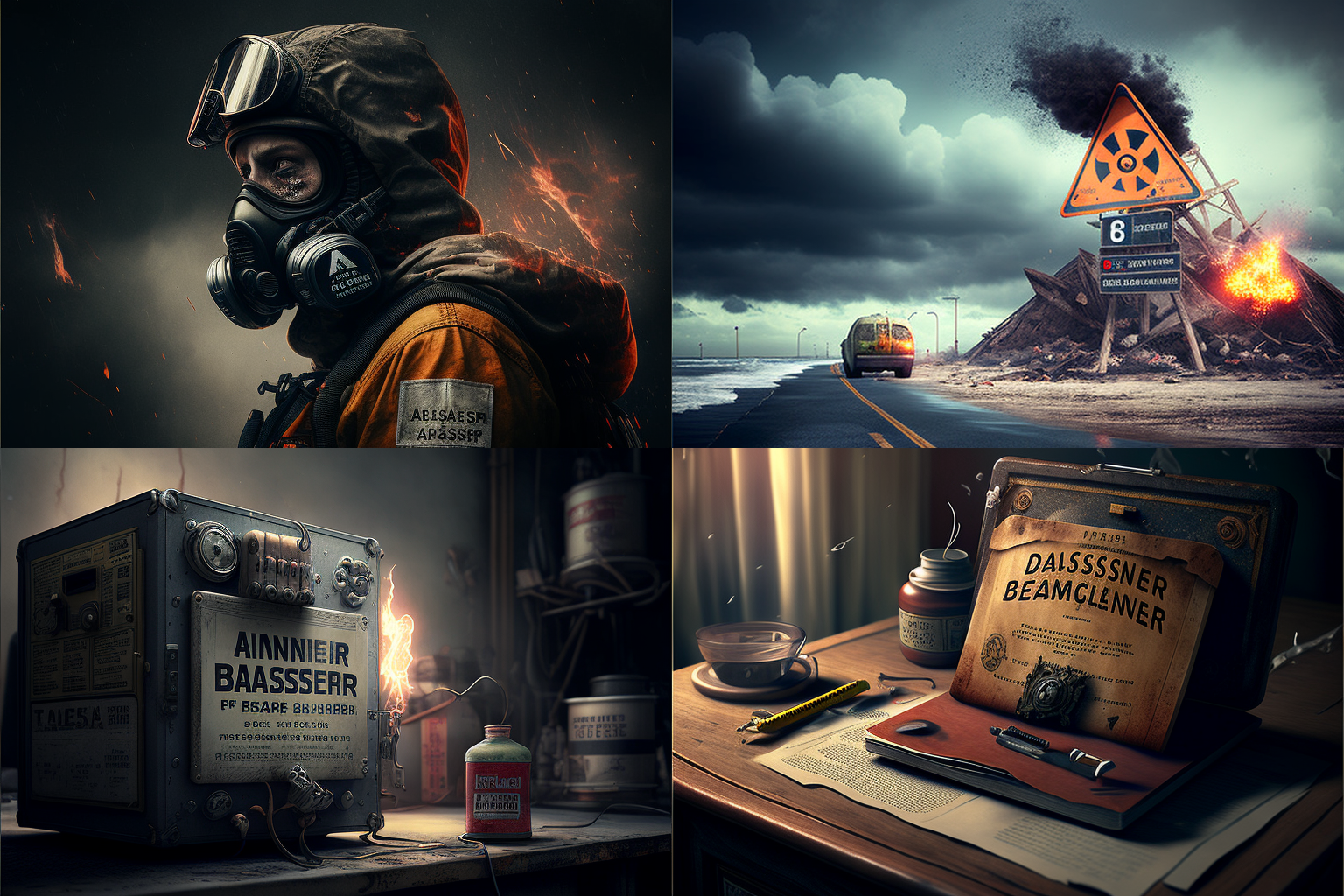
Errors to Steer Clear of After Surviving a Natural Disaster
Surviving a natural disaster is no easy feat, and the aftermath of such an event can be just as dangerous. In the immediate aftermath of a natural disaster, it’s easy to be overwhelmed by the trauma you’ve just experienced and to make mistakes that put yourself and others at risk. To help ensure that you and your loved ones stay safe, it’s essential to be aware of the common mistakes people make after a natural disaster and to take steps to avoid them.
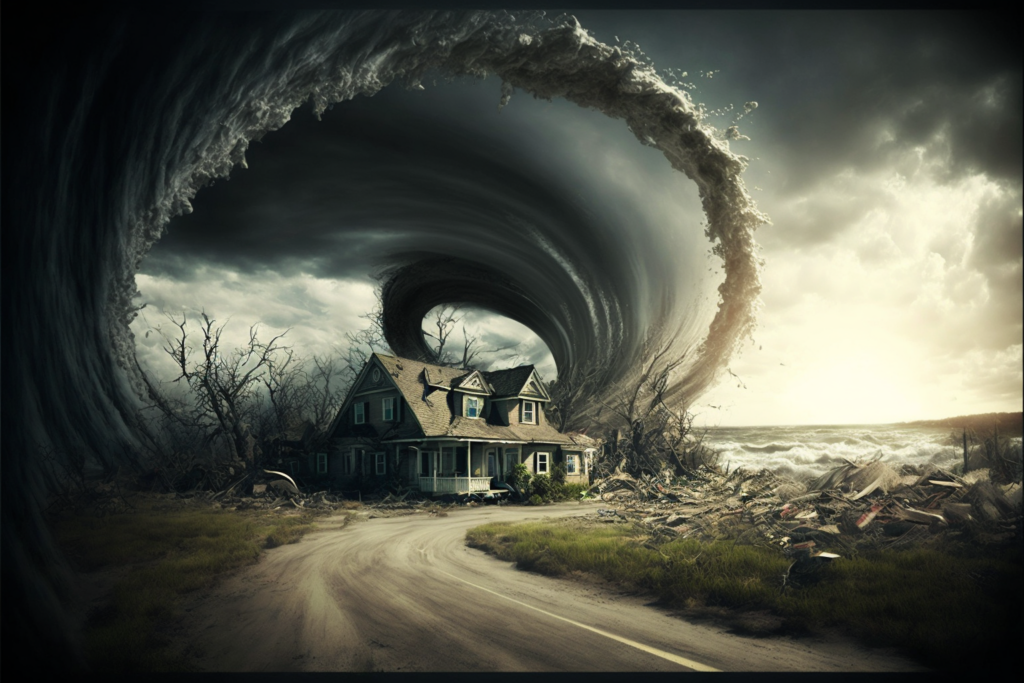
- Returning to an Unstable Building Too Soon
- Walking or Driving Through Dangerous Flood Waters
- Using Gas Appliances Before Damage Is Assessed
- Assuming the Danger Has Passed Before It’s Over
- Getting Into Unsafe Confrontations with Looters
- Not Addressing the Mental Toll the Event Took on You
- Ignoring evacuation orders
- Disregarding Emergency Instructions: The Dangers of Ignoring Evacuation Orders
- Failing to Prepare: The Consequences of Not Having a Disaster Recovery Plan
- Safeguarding Vital Documents: A Crucial Step To Take After a Natural Disaster
- Neglecting to Check on Loved ones and Community After a Disaster: A Pitfall to Avoid
- Failing to Identify and Assess Risks: A Mistake to Avoid After a Natural Disaster
- The Importance of Power Outage Preparedness in Natural Disaster Situations
- Proper Clean-up Procedures: A Must to Avoid Further Dangers After a Natural Disaster
One of the biggest mistakes people make after a natural disaster is returning to an unstable building too soon. This is especially dangerous if the building has been damaged or if there is the risk of collapse. Before re-entering a damaged building, it’s important to wait for the all-clear from emergency officials and to have the building inspected by a professional to make sure it’s safe.
Another common mistake people make after a natural disaster is walking or driving through dangerous flood waters. Flood waters can be contaminated with sewage, chemicals, and debris, and can also be deeper than they appear. To stay safe, it’s important to avoid flood waters as much as possible and to only walk or drive through them if it’s absolutely necessary and you’re aware of the risks.
Another mistake to avoid is using gas appliances before damage is assessed. If a natural disaster involves a gas leak or other damage to gas lines, using gas appliances could lead to fire or explosion. It’s important to have gas appliances checked by a professional before using them after a natural disaster to ensure that they’re safe.
Assuming that the danger has passed before it’s over is also a common mistake after a natural disaster. Even if the event has passed, there may still be hazards present, such as fallen power lines, toxic chemicals, or contaminated water. It’s important to continue following emergency officials’ advice and stay informed about the situation to ensure you are not putting yourself or your loved ones in danger.
Another mistake that is common post-disaster is getting into unsafe confrontations with looters. Unfortunately, some people take advantage of the chaos following a disaster to steal from others. To protect yourself and your property, avoid confrontations with looters and call the police if you see them in your neighborhood.
Finally, it’s important to address the mental toll a natural disaster can take on you. The trauma of surviving such an event can have a lasting impact on your mental health, and it’s important to seek help if you’re struggling emotionally. This can include talking to a therapist, joining a support group, or seeking help from crisis hotlines.
In conclusion, a natural disaster can be a traumatic and dangerous event, but by being aware of common mistakes people make after such an event and taking steps to avoid them, you can help ensure the safety of yourself and your loved ones. Knowing how to prepare for, get through, and navigate the aftermath is important to overall survival. It’s important to educate yourself on the risks and hazards and to follow the advice of emergency officials, so you can protect yourself and your family and recover as best as possible.
Returning to an Unstable Building Too Soon
Returning to an unstable building too soon is one of the most dangerous mistakes people make after a natural disaster. When a building has been damaged or is at risk of collapse, it can be very dangerous to enter, and it’s important to wait for the all-clear from emergency officials before re-entering.
The reasons for this are numerous: structural integrity may have been compromised, electrical or gas lines could be damaged and pose explosion or fire risks, and there could be hidden dangers such as broken glass, sharp debris or even wild animals that have taken refuge inside the building.

It’s also important to have a professional inspect the building before re-entering to ensure that it’s safe. A building inspector will check for structural damage, assess the stability of the building and identify any potential hazards.
Once the all-clear has been given and the building has been deemed safe, it’s still important to proceed with caution. Wear protective gear such as hardhats and gloves, and watch for signs of danger such as gas leaks, exposed electrical wires, or unstable ceilings.
If the building is deemed too unstable or dangerous to re-enter, it’s important to find alternative housing. Emergency shelters are set up in the aftermath of natural disasters to provide a safe place for displaced people. You should also be in touch with your insurance company to process a claim for the damage suffered.
In summary, returning to an unstable building too soon can be incredibly dangerous, and it’s important to wait for the all-clear from emergency officials and to have the building inspected by a professional before re-entering. Remembering to stay safe, proceed with caution and have alternative plans in place is important and necessary.
Walking or Driving Through Dangerous Flood Waters
Walking or driving through dangerous flood waters is another common mistake people make after a natural disaster. Flood waters can be perilous and can be contaminated with sewage, chemicals, and debris, making them a health hazard. In addition, flood waters can be deeper than they appear and contain powerful currents that can sweep you off your feet.
To stay safe, it’s important to avoid flood waters as much as possible. If you must walk or drive through them, it’s important to be aware of the risks and to take the necessary precautions.
When walking through flood waters, it’s important to wear protective gear such as waterproof boots and gloves, and to use a stick or pole to test the depth of the water ahead of you. Flood waters can be deeper than they appear, and it’s important to avoid areas where the water is too deep to safely navigate.
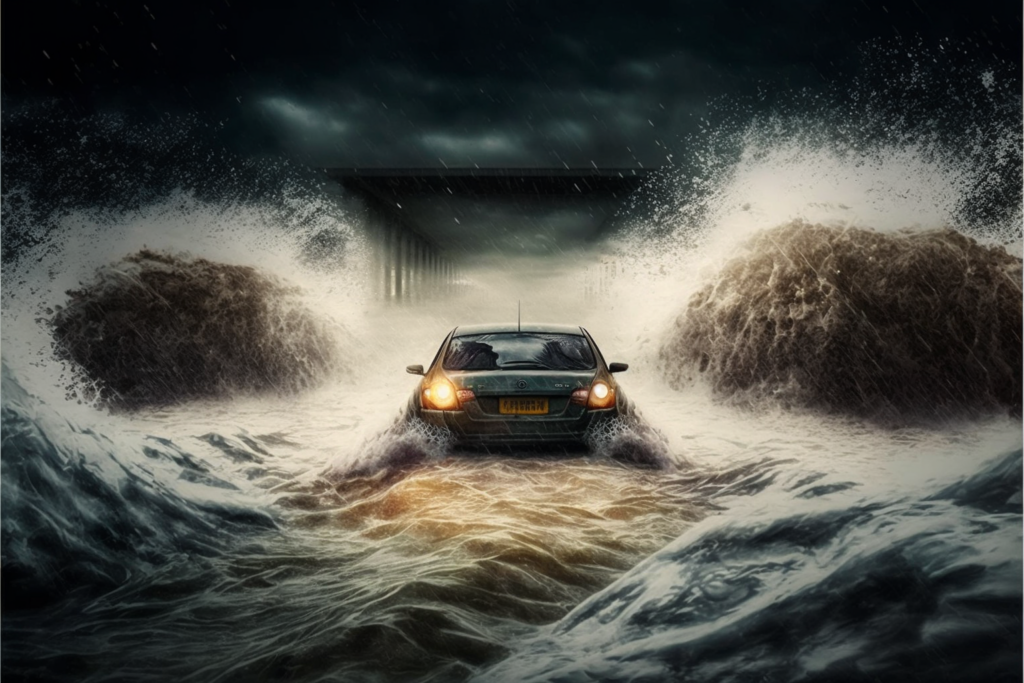
When driving through flood waters, it’s important to remember that as little as 6 inches of water can cause a vehicle to lose control or stall. It’s important to drive slowly and carefully, and to avoid driving through flood waters if possible.
It’s also important to keep in mind that flash floods can occur quickly and without warning, so you should stay aware of weather reports and alerts to be prepared. In case of evacuation, always follow the instructions of emergency officials, and never drive or walk through flood waters unless you have no other choice, as the risk of being swept away is very high.
In summary, walking or driving through dangerous flood waters can be incredibly dangerous, and it’s important to avoid them as much as possible. When you must walk or drive through flood waters, it’s important to be aware of the risks, to take the necessary precautions, and to stay informed about the weather conditions. Above all, follow the advice of emergency officials and prioritize safety and caution.
Using Gas Appliances Before Damage Is Assessed
Using gas appliances before damage is assessed is another mistake people commonly make after a natural disaster. If a natural disaster involves a gas leak or other damage to gas lines, using gas appliances could lead to a fire or explosion. This is why it’s important to have gas appliances checked by a professional before using them after a natural disaster to ensure that they’re safe.
The first step in assessing the safety of gas appliances is to turn off the gas supply. This can be done by turning off the main gas valve, which is typically located near the gas meter. Turning off the gas supply will prevent gas from flowing into the building, which will make it safe to inspect the appliances.
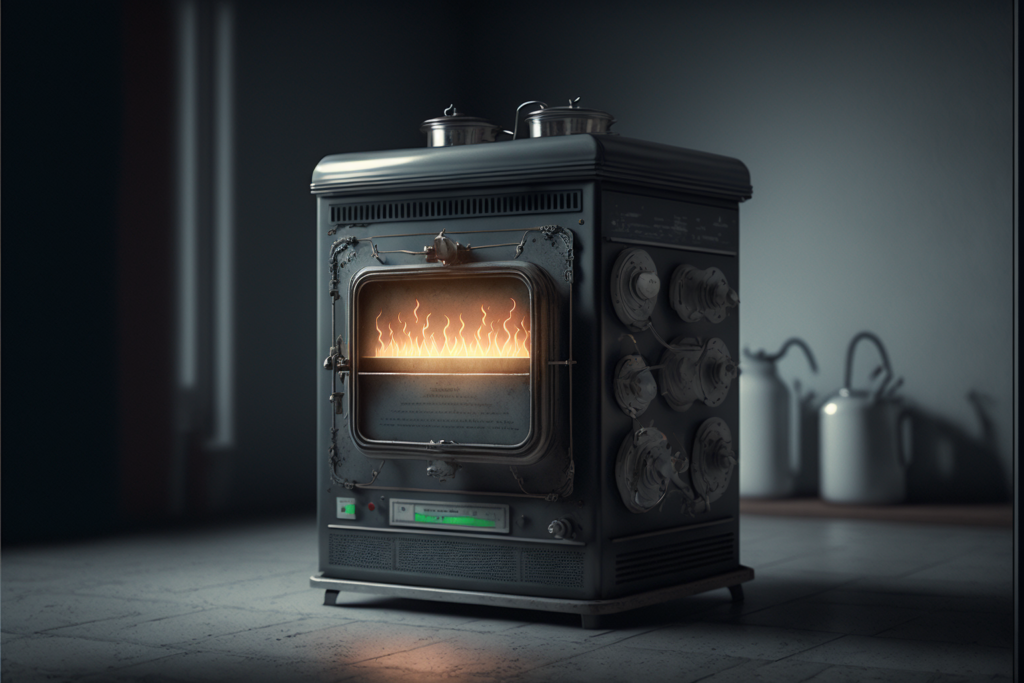
Next, it’s important to check for visible damage to the appliances, such as dents, cracks, or other signs of damage. If there is visible damage, it’s important to have the appliances inspected by a professional to determine if they’re safe to use.
It’s also important to check for gas leaks. If you smell gas, it’s important to leave the building immediately and to call the gas company. Gas leaks can be dangerous and can lead to fires or explosions if not dealt with properly.
Once the appliances have been inspected and any necessary repairs have been made, it’s safe to turn the gas supply back on and to begin using the appliances again.
In summary, using gas appliances before damage is assessed is a mistake that can put people in danger after a natural disaster. To ensure the safety of gas appliances, it’s important to turn off the gas supply, check for visible damage, check for gas leaks and have gas appliances inspected by a professional before using them again. Remembering to prioritize safety and to follow the advice of professionals is important to avoid any further hazards.
Assuming the Danger Has Passed Before It’s Over
Assuming the danger has passed before it’s over is another common mistake people make after a natural disaster. Even if the event has passed, there may still be hazards present, such as fallen power lines, toxic chemicals, or contaminated water. It’s important to continue to follow the advice of emergency officials and to stay informed about the situation to ensure you are not putting yourself or loved ones in danger.
It’s also important to be aware that some hazards may not be immediately visible, such as structural damage to buildings, or unseen leaks that can have dangerous consequences. For example, a fallen tree may have damaged a gas line, electrical wires or sewage pipes, leading to future hazards.

It’s important to also keep in mind that recovery and cleanup efforts can take time, and it may be several days or even weeks before an area is deemed safe. Additionally, aftershocks or landslides can happen after the main event, so it’s important to stay alert.
To stay safe after a natural disaster, it’s important to follow the advice of emergency officials, to stay informed about the situation, and to be aware of potential hazards. It’s also important to keep a close eye on the weather forecast, as flash floods, storms, and other hazards can occur even after the main event.
In summary, assuming the danger has passed before it’s over can put people in danger after a natural disaster. Even if the event has passed, it’s important to continue following emergency officials’ advice and stay informed about the situation to ensure you are not putting yourself or loved ones in danger. It’s also important to be aware that some hazards may not be immediately visible, and to be prepared for the recovery and cleanup efforts to take time.
Getting Into Unsafe Confrontations with Looters
Getting into unsafe confrontations with looters is another common mistake after a natural disaster. Unfortunately, some people take advantage of the chaos following a disaster to steal from others. This can be both emotionally and financially draining for the affected community and individuals, and put them in danger as well.
To protect yourself and your property, it’s important to avoid confrontations with looters and to take steps to secure your property. This includes locking doors and windows, and installing security cameras if possible. It’s also important to have a plan in case of looting and to consider safety measures such as securing valuables, weapons, and other items that can be used to protect oneself.

It’s also a good idea to stay informed about the situation and be aware of the areas affected by looting. Keep an eye out for any suspicious activity and report it to the police immediately.
It’s also important to remember that looting is illegal, and that those who are caught looting can be arrested and face charges. The police are there to protect the community, and they will take action against looters to keep people safe.
If you find yourself in a situation where you’re confronted by a looter, it’s important to stay calm, and to not engage in physical confrontations. Instead, try to de-escalate the situation and to get away as quickly as possible. If you feel threatened, call the police immediately.
In summary, getting into unsafe confrontations with looters is a mistake that can put people in danger after a natural disaster. To protect yourself and your property, it’s important to avoid confrontations with looters and to take steps to secure your property. Stay informed about the situation, be aware of the areas affected by looting, and report suspicious activity to the police immediately. If confronted by a looter, try to de-escalate the situation and to get away as quickly as possible, and remember that looting is illegal and those caught will face charges.
Not Addressing the Mental Toll the Event Took on You
Not addressing the mental toll a natural disaster can take on you is another common mistake people make after a natural disaster. The trauma of surviving such an event can have a lasting impact on your mental health, and it’s important to seek help if you’re struggling emotionally.
The experience of a natural disaster can cause a wide range of emotions, from fear and anxiety to anger and depression. It’s important to recognize these emotions and to understand that they’re a normal response to a traumatic event.

To address the mental toll of a natural disaster, it’s important to take care of yourself both physically and emotionally. This includes eating well, getting enough sleep, and exercising regularly. It’s also important to stay connected with friends and family, and to talk about your feelings with loved ones or a therapist.
Seeking help from a therapist or counselor can be especially beneficial in dealing with the aftermath of a natural disaster. They can provide support and guidance to help you cope with the trauma you’ve experienced, and can also help you develop strategies to manage your feelings and to move forward.
It’s also important to seek help if you are experiencing symptoms of post-traumatic stress disorder (PTSD) such as flashbacks, nightmares, and avoidance behaviors, as well as panic attacks, depression, and anxiety. PTSD can be a significant barrier for people recovering from a natural disaster.
Additionally, joining a support group with people who have gone through similar experiences can be a great way to connect with others who understand what you’re going through.
In summary, not addressing the mental toll a natural disaster can take on you is a mistake that can have long-term effects on your mental health. It’s important to take care of yourself, both physically and emotionally and to seek help if you’re struggling emotionally. This can include talking to a therapist, joining a support group, or seeking help from a crisis hotline. Remembering that the emotional toll is just as important as the physical one and seeking help early on can help facilitate recovery.
Disregarding Emergency Instructions: The Dangers of Ignoring Evacuation Orders
It’s important to follow the advice of emergency officials and to evacuate when ordered to do so. Ignoring evacuation orders can put you and others in danger.
Ignoring evacuation orders is a mistake that can put you and others in danger after a natural disaster. Emergency officials issue evacuation orders for a reason, and it’s important to follow them to ensure your safety.
During a natural disaster, emergency officials will monitor the situation closely and will issue evacuation orders if they believe that staying in an area could put people in danger. For example, if a hurricane is forecast to hit a specific area, officials will order residents to evacuate to ensure their safety.
Ignoring an evacuation order can put you in harm’s way, and it can also put a strain on emergency services who are trying to keep people safe. It can also prevent emergency responders and vehicles to move freely, making it harder for them to respond to other needs.
Before a natural disaster, it’s important to familiarize yourself with the evacuation routes and procedures for your area, and to have a plan in place for what you will do in case of an emergency. This includes having an emergency kit ready, knowing the evacuation routes, and having a communication plan with family members.
When an evacuation order is issued, it’s important to leave as soon as possible and to follow the instructions of emergency officials. If you’re unable to evacuate, it’s important to have a plan inplace for where you’ll take shelter and to stay informed about the situation.
It’s also important to remember that evacuation orders can change as the situation evolves, so it’s important to stay informed about the latest developments and to be prepared to adapt your plans as needed. Additionally, during an evacuation, it’s important to take only essential items and to keep all important documents such as ID and insurance papers with you, in a safe and secure place, and if possible on a digital format as well.
In summary, ignoring evacuation orders is a mistake that can put yourself and others in danger after a natural disaster. It’s important to familiarize yourself with the evacuation routes and procedures for your area, to have a plan in place and to follow the instructions of emergency officials. Stay informed about the situation, be prepared to adapt your plans, and remember to take care of essential items and important documents. Always prioritize safety and follow the guidance of authorities during such scenarios.
Failing to Prepare: The Consequences of Not Having a Disaster Recovery Plan
Before a natural disaster occurs, it’s important to have a plan for what you will do in an emergency. This includes having an emergency kit ready, knowing the evacuation routes, and having a communication plan with family members.
Not having a plan for what you will do in case of a natural disaster is a mistake that can put you and your loved ones in danger. Having a plan in place before a natural disaster occurs can help ensure that you know what to do and how to stay safe.
To create a plan, it’s important to familiarize yourself with the types of natural disasters that are most likely to occur in your area and the steps you need to take to protect yourself and your loved ones. This includes having an emergency kit ready, knowing the evacuation routes and procedures, and having a communication plan in place with family members.
An emergency kit should include essential items such as food, water, a first-aid kit, flashlights, and a battery-powered or hand-crank radio. It’s also important to have a list of emergency contact numbers, including local emergency services, family and friends, and insurance providers.
It’s also important to plan what you’ll do with your pets in case of an emergency, since many emergency shelters do not allow pets. It’s also a good idea to consider having a designated meeting place with friends and family so that you can check in with each other after the event.
It’s also a good idea to practice the plan so that everyone knows what to do and feels prepared in an emergency.
In summary, not having a plan for what you will do in case of a natural disaster is a mistake that can put you and your loved ones in danger. It’s important to familiarize yourself with the types of natural disasters that are most likely to occur in your area, and to have a plan in place that includes an emergency kit, evacuation routes and procedures, and a communication plan with family members. Practicing the plan and staying informed about potential hazards can ensure safety and peace of mind.
Safeguarding Vital Documents: A Crucial Step To Take After a Natural Disaster
Natural disasters can cause extensive damage to homes and businesses, and important documents such as birth certificates, passports, and insurance policies can be destroyed. It’s important to secure these documents in a waterproof and fireproof container or to keep digital copies in secure cloud storage.
Not securing important documents, such as birth certificates, passports, and insurance policies, is a mistake that can have serious consequences after a natural disaster. These documents are often needed to access emergency services, insurance claims, and to rebuild your life after the event. Losing these documents can make the recovery process much more difficult and time-consuming.
To protect important documents, it’s important to keep them in a waterproof and fireproof container, or to have digital copies in a secure cloud storage. It’s also a good idea to make copies of the documents and to keep them in a separate location, such as a safety deposit box, so that they can be accessed even if the original copies are lost or damaged.
You should also have electronic copies of important documents and keep them in a cloud storage. This can include copies of insurance policies, bank account numbers, and other important information needed in an emergency.
It’s also important to keep these documents updated and check them regularly to ensure they are current. This can include renewing expired licenses and ID cards, and updating contact information.
In summary, not securing important documents is a mistake that can have serious consequences after a natural disaster. To protect important documents, it’s essential to keep them in a waterproof and fireproof container, to have digital copies in secure cloud storage, and to keep copies of the documents in a separate location. It’s also important to keep these documents updated and check them regularly to ensure they are current. This can make the recovery process much more manageable and smooth.
Neglecting to Check on Loved ones and Community After a Disaster: A Pitfall to Avoid
Natural disasters can be a traumatic experience for everyone in the community. It’s important to check on your neighbors and to offer assistance if needed.
Not checking on your neighbors after a natural disaster is a mistake that can have serious consequences, both for your neighbors and for your community as a whole. After a natural disaster, people often experience trauma and may need help and support in the days, weeks and even months that follow.
Checking on your neighbors can be as simple as knocking on their door and asking if they need any assistance or if there’s anything you can do to help. This can include offering to bring them food, water, or other essential supplies, or to help with cleaning up and rebuilding.
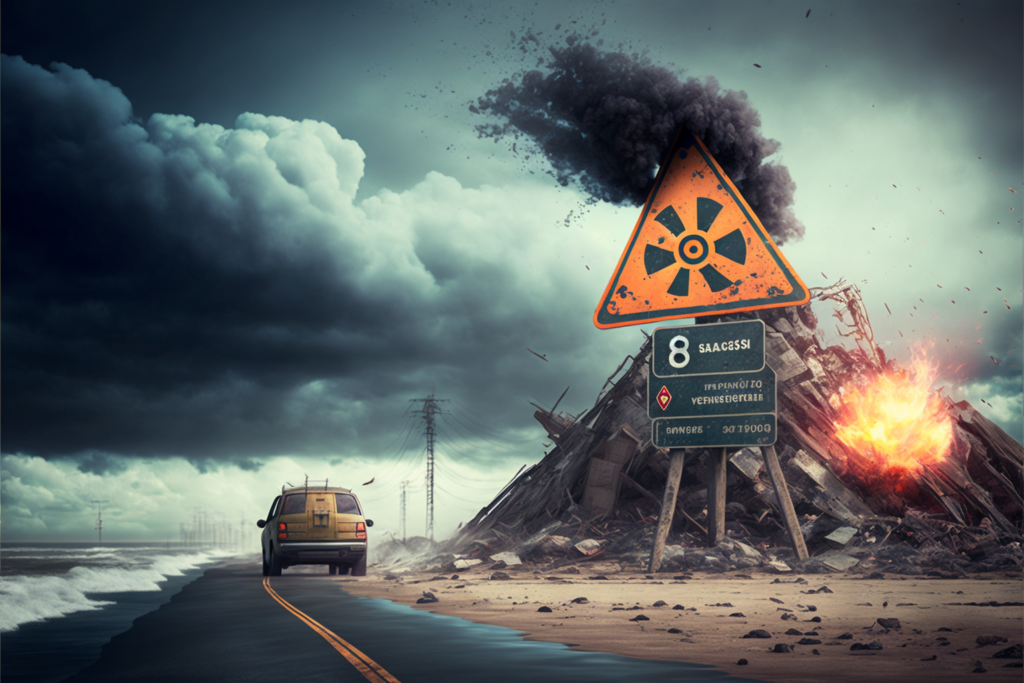
It can also involve assisting with more specific needs like helping them secure their homes, or even offer a temporary place to stay. In case some of your neighbors are disabled, elderly or have other special needs, they may need extra assistance and attention.
Helping your neighbors can also help to strengthen your community and can make it more resilient in the face of future natural disasters.
Additionally, checking on your neighbors can also help you understand the extent of the disaster, and can help you assess any potential hazards such as fallen power lines, leaks or structural damage.
In summary, not checking on your neighbors after a natural disaster is a mistake that can have serious consequences, both for your neighbors and for your community as a whole. Checking on your neighbors can provide emotional support, can help them secure their homes and can make the community more resilient. It’s important to take initiative, be proactive and to offer help and support to those who need it.
Failing to Identify and Assess Risks: A Mistake to Avoid After a Natural Disaster
Every natural disaster has its own set of hazards, so it’s important to be aware of the potential hazards specific to your area and to take steps to protect yourself accordingly.
Not being aware of potential hazards after a natural disaster is a mistake that can put yourself and others in danger. Each natural disaster has its own set of hazards, so it’s important to be aware of the specific hazards associated with the event and to take steps to protect yourself accordingly.
For example, during a hurricane, potential hazards include high winds, flooding, and storm surges. During a wildfire, potential hazards include smoke, ash, and the risk of structural damage. For earthquakes, potential hazards include aftershocks, landslides, and gas leaks.
It’s important to be aware of these hazards, and to take steps to protect yourself. This can include staying indoors, avoiding flood-prone areas, wearing a mask to protect from smoke, and having a plan in case of an aftershock.
Staying informed is also important, as new hazards can arise even after the main event has passed. This includes monitoring weather forecasts and staying updated on the latest news and warnings.
Additionally, it’s important to take measures to prevent hazards, such as securing loose items outside, and creating a plan in case of an emergency and keep emergency numbers handy.
In summary, not being aware of potential hazards after a natural disaster is a mistake that can put yourself and others in danger. It’s important to be aware of the specific hazards associated with the event and to take steps to protect yourself accordingly, staying informed about new hazards, and taking measures to prevent them. It’s important to pay attention to the authorities’ guidance and stay informed about the situation to avoid potential hazards and keep yourself safe.
The Importance of Power Outage Preparedness in Natural Disaster Situations
Natural disasters often cause power outages. It’s important to be prepared for power outages by having backup power sources and emergency lighting ready.
Not being prepared for power outages is a common mistake that can cause inconvenience and can put people at risk after a natural disaster. Power outages are a common occurrence during natural disasters, and they can last for days, or even weeks. This can cause problems for essential services like hospitals, and can make it difficult for people to stay safe and maintain their daily activities.
To prepare for power outages, it’s important to have backup power sources and emergency lighting ready. This can include a generator, a battery-powered or hand-crank radio, flashlights, and candles. Having backup power sources for electronic devices such as smartphones and laptops is also important, as well as having a cooler and storing frozen water bottles, which can help keep food fresh for a longer time.
It’s also important to have enough non-perishable food, water, and other supplies to last several days. Additionally, having a manual can opener, matches, and a stove that uses propane or camping stove can be extremely helpful in case power outages last longer than expected.
It’s also important to be aware of the dangers associated with backup power sources and to use them safely, such as avoiding the use of gas-powered generators indoors, or in enclosed spaces.
In summary, being unprepared for power outages is a mistake that can cause inconvenience and put people at risk after a natural disaster. Preparing for power outages includes having backup power sources, emergency lighting and enough non-perishable food, water and other supplies on hand. It’s important to be aware of the dangers of backup power sources and use them safely. Being prepared for power outages can help keep people safe and maintain daily activities in case of an emergency situation.
Proper Clean-up Procedures: A Must to Avoid Further Dangers After a Natural Disaster
Cleaning up after a natural disaster is important, but it’s also important to do it safely. Improperly cleaning up can lead to further injuries and hazards, so it’s important to wear protective gear, and follow proper cleaning and disposal procedures.
Not cleaning up properly after a natural disaster is a mistake that can lead to further injuries and hazards. Cleaning up after a natural disaster is important, but it’s also important to do it safely.
It’s important to wear appropriate protective gear, such as gloves, masks, and goggles, to avoid exposure to hazardous materials. If there is any standing water, make sure to wear waterproof boots or shoes to avoid slips and falls.
It’s also important to use proper tools and equipment when cleaning up, such as heavy-duty brooms, shovels, and rakes to move debris and remove standing water. Additionally, it’s important to be aware of hazards such as broken glass, sharp metal, and other debris present after a disaster.
When cleaning up, it’s important to follow proper disposal procedures, as not all debris can be disposed of similarly. Hazardous materials such as chemicals or asbestos may require special disposal procedures and should be handled by professionals.
It’s also important to be aware of mold and bacteria that can grow after a disaster, especially in warm and humid environments, and to take appropriate precautions to prevent it.
In summary, not cleaning up properly after a natural disaster is a mistake that can lead to further injuries and hazards. Cleaning up safely includes wearing appropriate protective gear, using proper tools and equipment, following reasonable disposal procedures, and being aware of hazards such as broken glass, sharp metal, and bacteria. Not following these safety guidelines can make an already difficult situation worse. It’s important to be aware of these hazards, take precautions and to follow the guidance of authorities to properly clean up and minimize the potential for further dangers.
I am Ellen, and I love the wilderness. I grew up exploring the forests and streams near my home, and I have never lost my love for nature.
These days, I spend as much time in the wild as possible. Whether camping, hiking, or simply sitting by a riverbank, I find peace and solace in the natural world. In fact, I would say that nature is my true home.
-

 Canoe3 weeks ago
Canoe3 weeks agoHow To Build An Outrigger Sailing Canoe
-

 Canoe4 weeks ago
Canoe4 weeks agoWhat Does Douche Canoe Mean
-

 Canoe2 days ago
Canoe2 days agoHow To Build A Canoe Trailer From Scratch
-

 Canoe4 weeks ago
Canoe4 weeks agoHow To Make A Fibreglass Canoe
-

 Beginners Guides2 weeks ago
Beginners Guides2 weeks agoThings to Do For Kids in Redwood National Park California
-

 Kayak Trailers3 weeks ago
Kayak Trailers3 weeks ago19 Best Kayak Trailers Reviewed in 2022
-

 Canoe4 weeks ago
Canoe4 weeks agoHow To Make Cedar Strips For A Canoe
-

 Canoe4 weeks ago
Canoe4 weeks agoStillwater Canoe Built By Oldtown What Arethe Demention On The 12 Footer




















